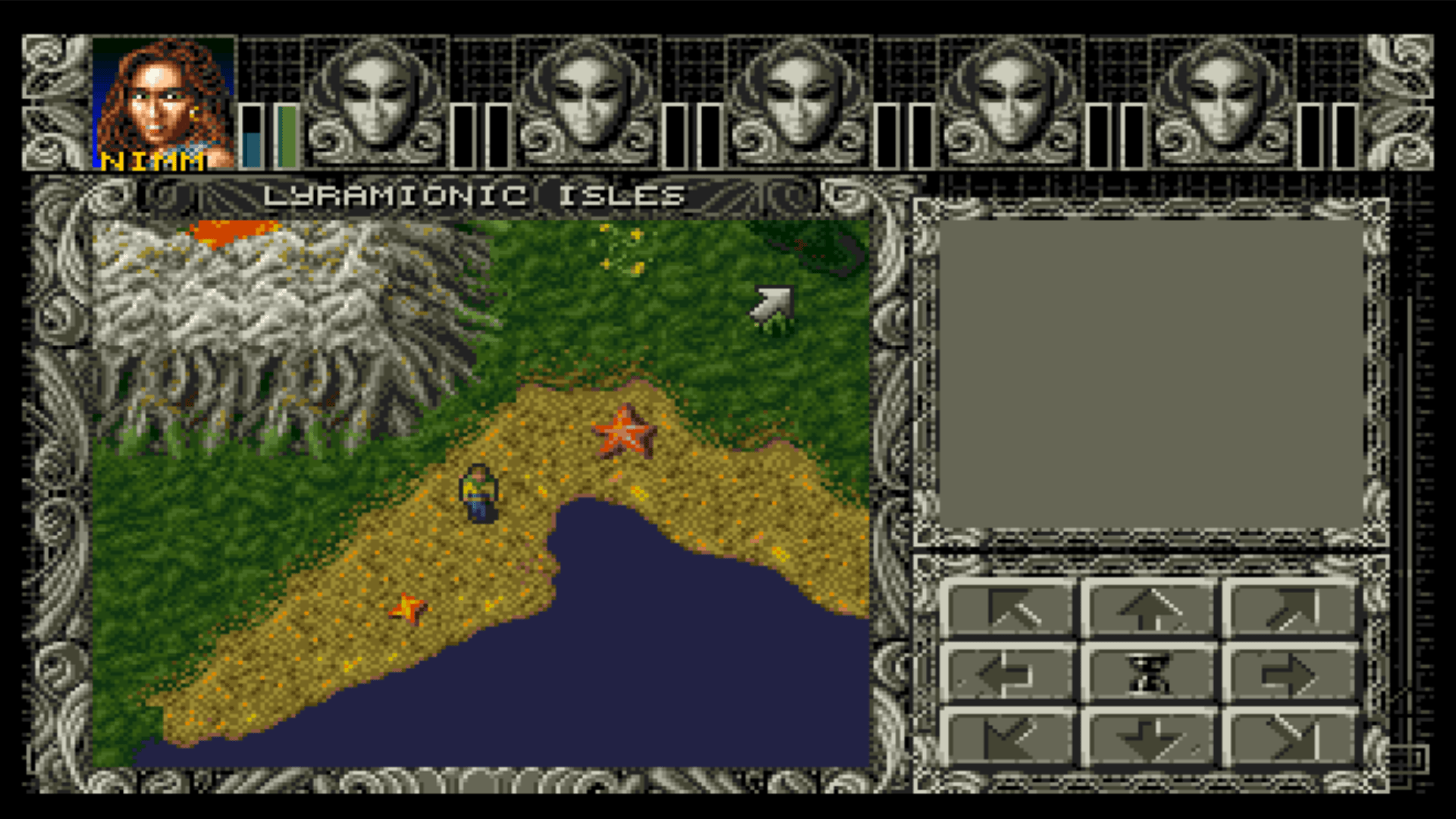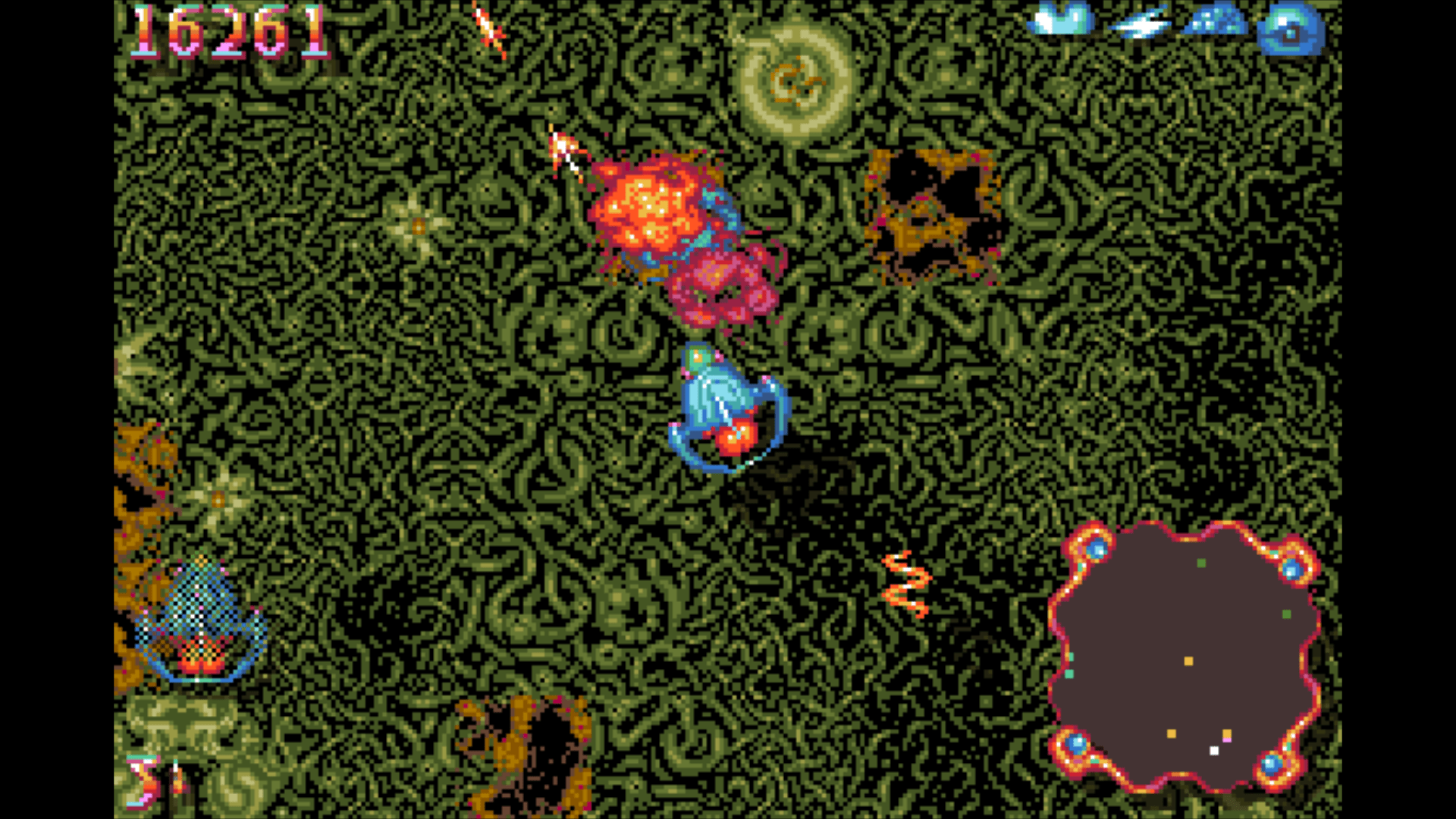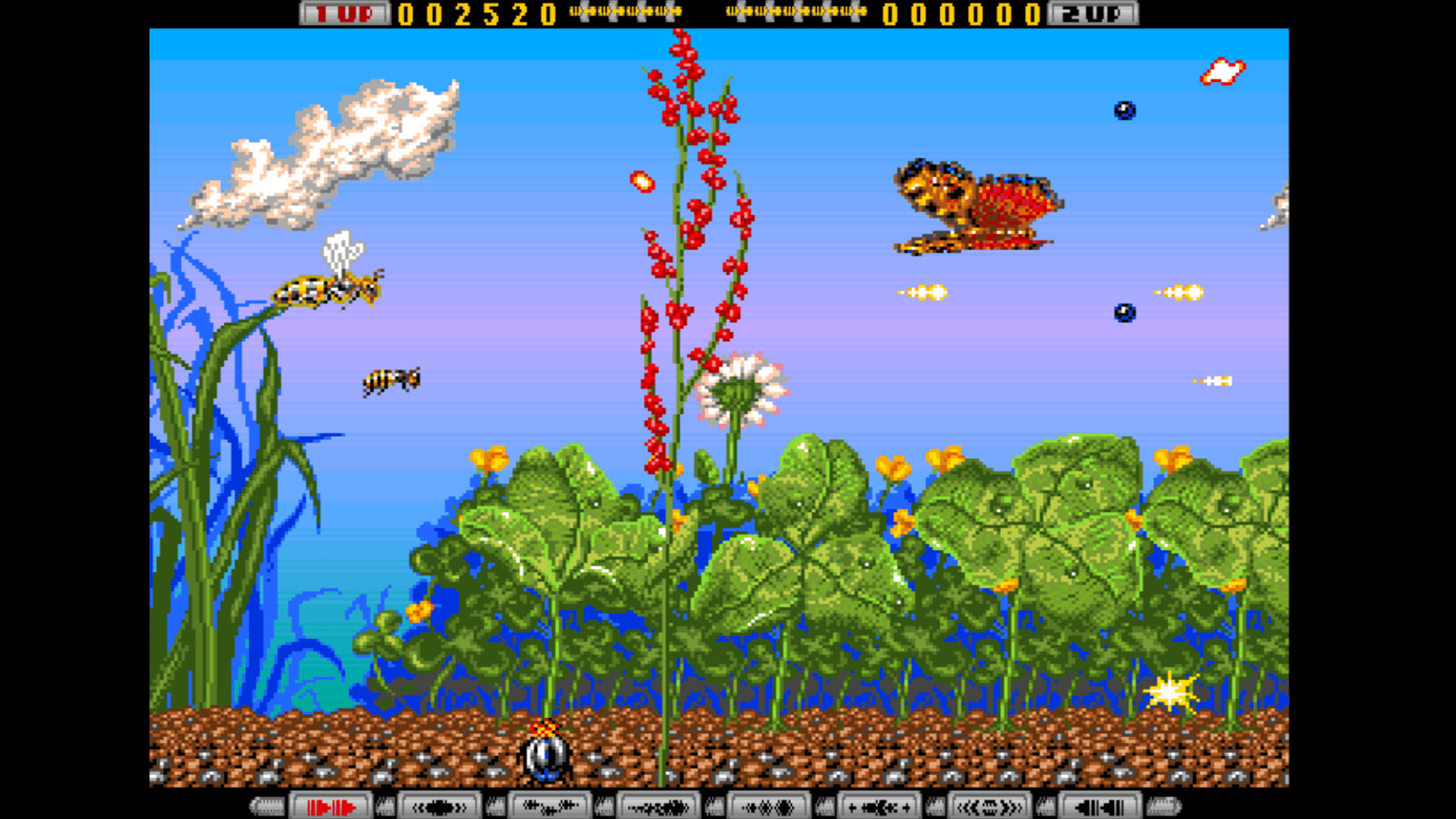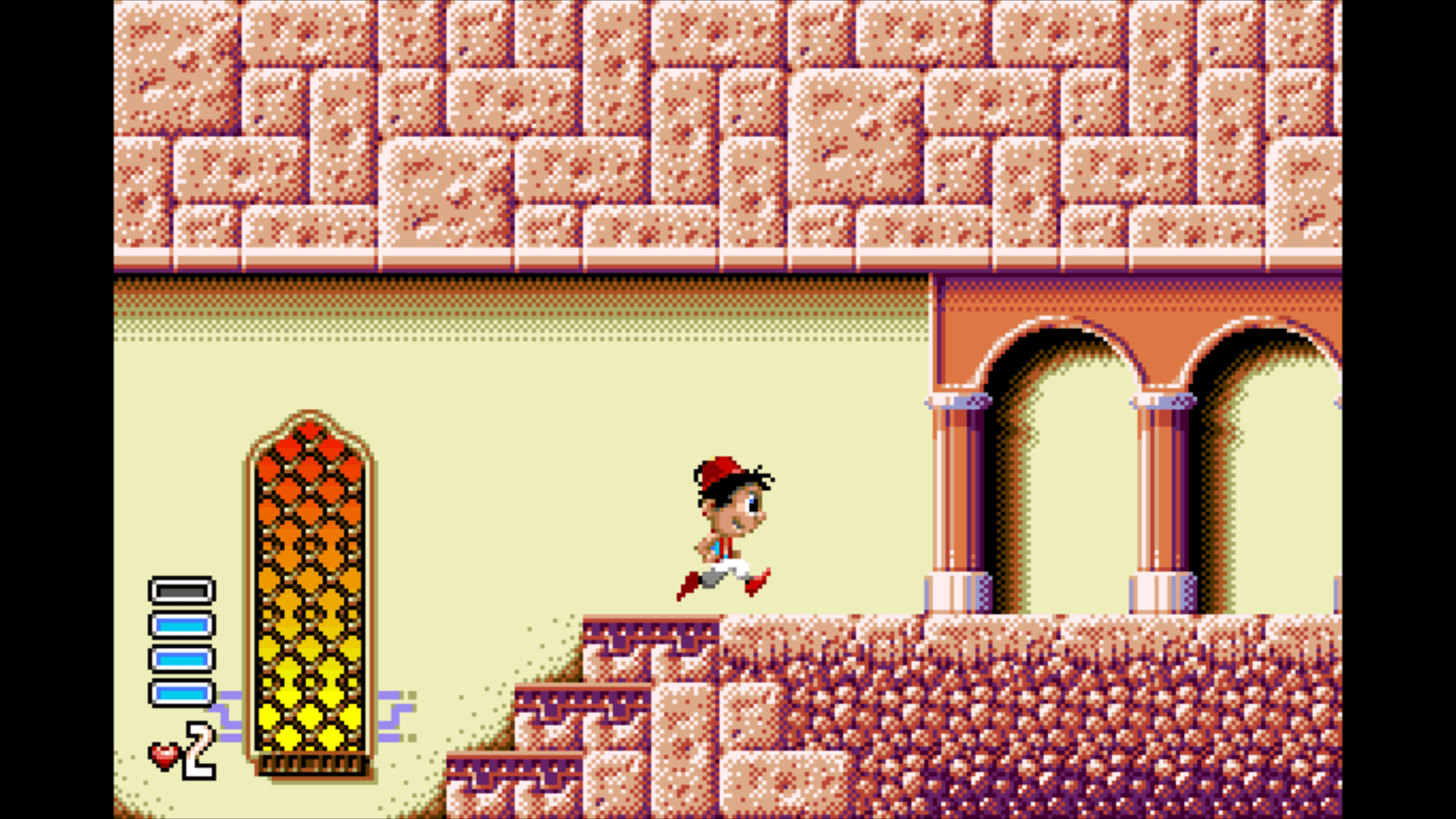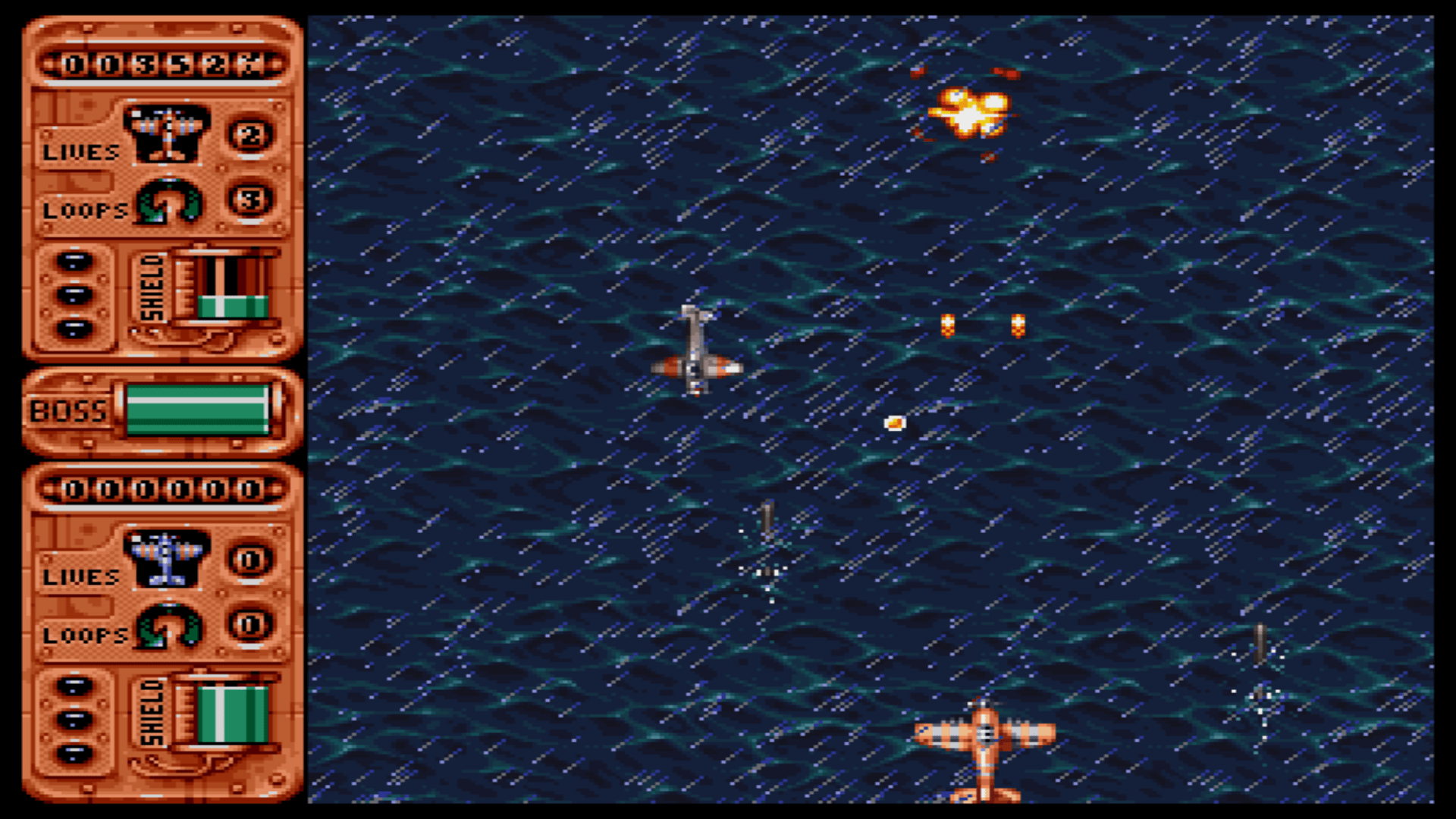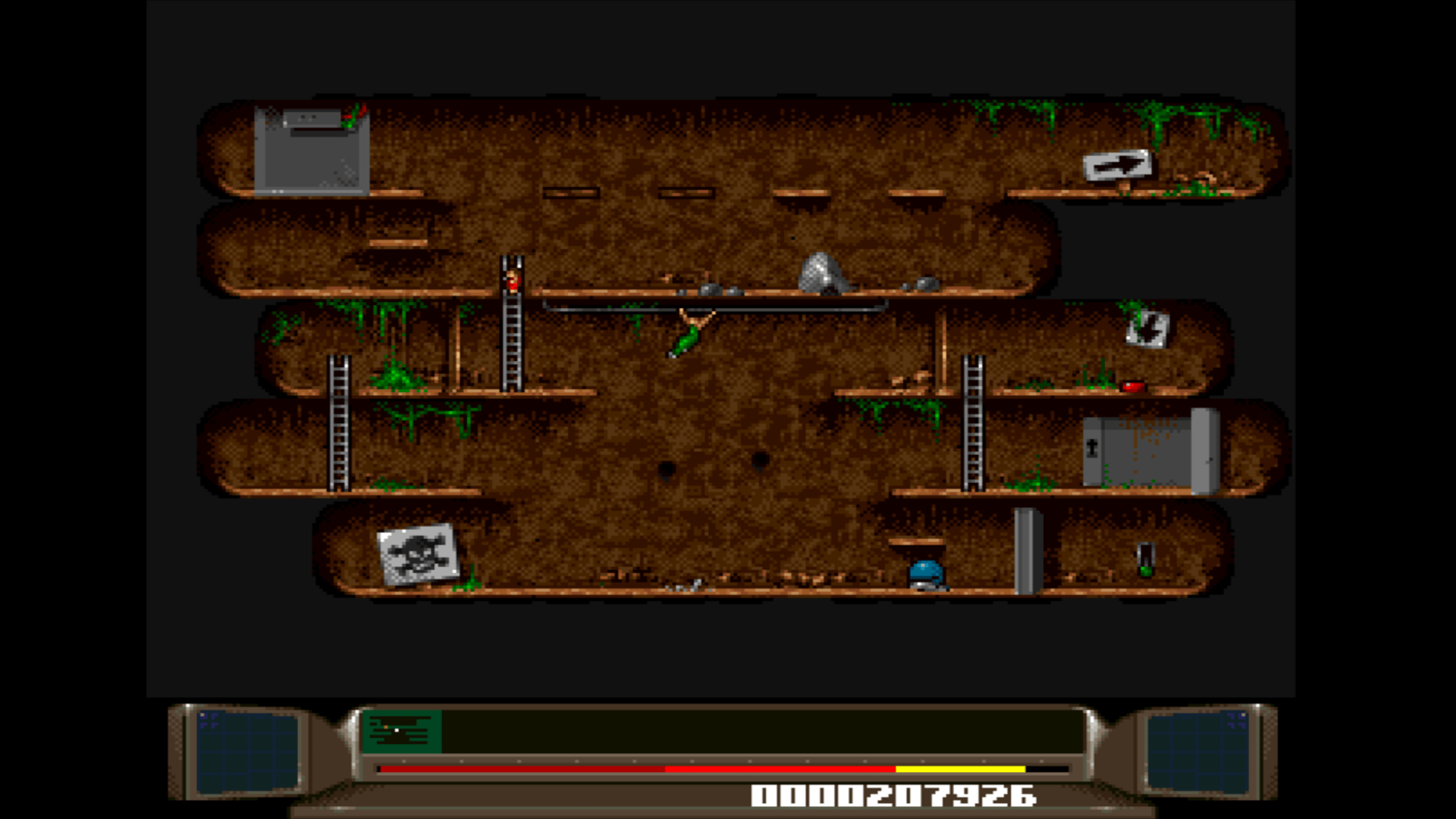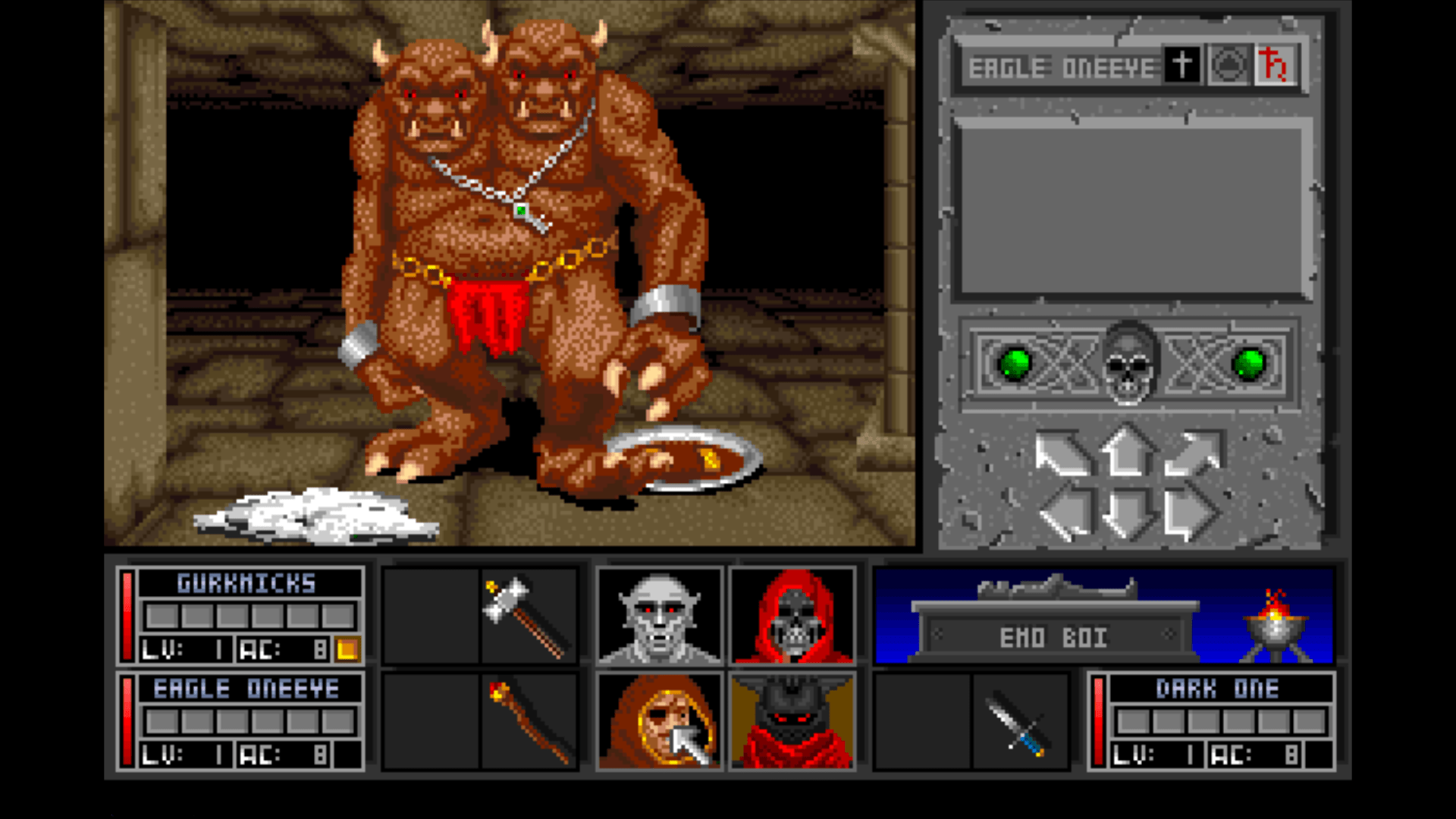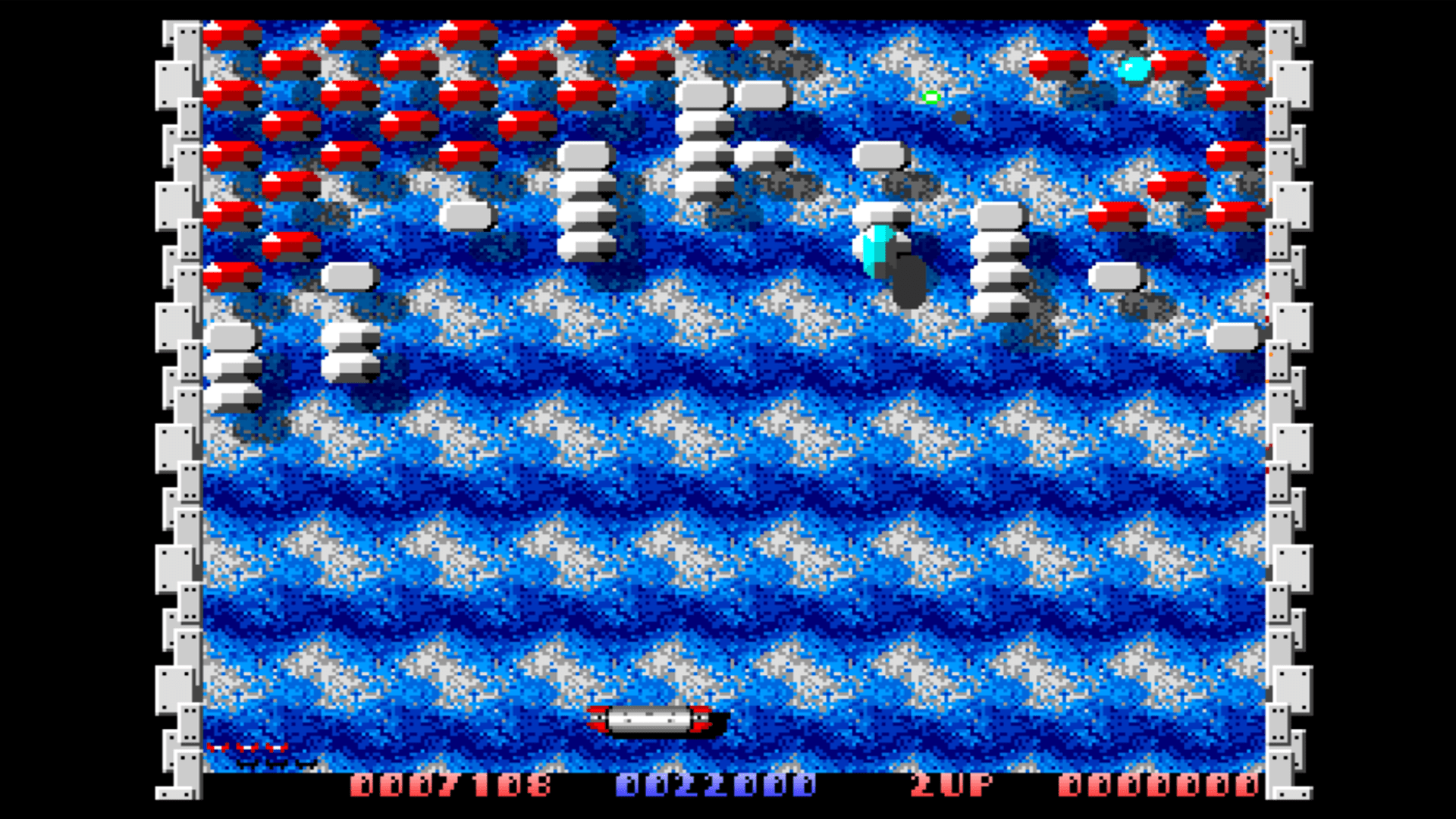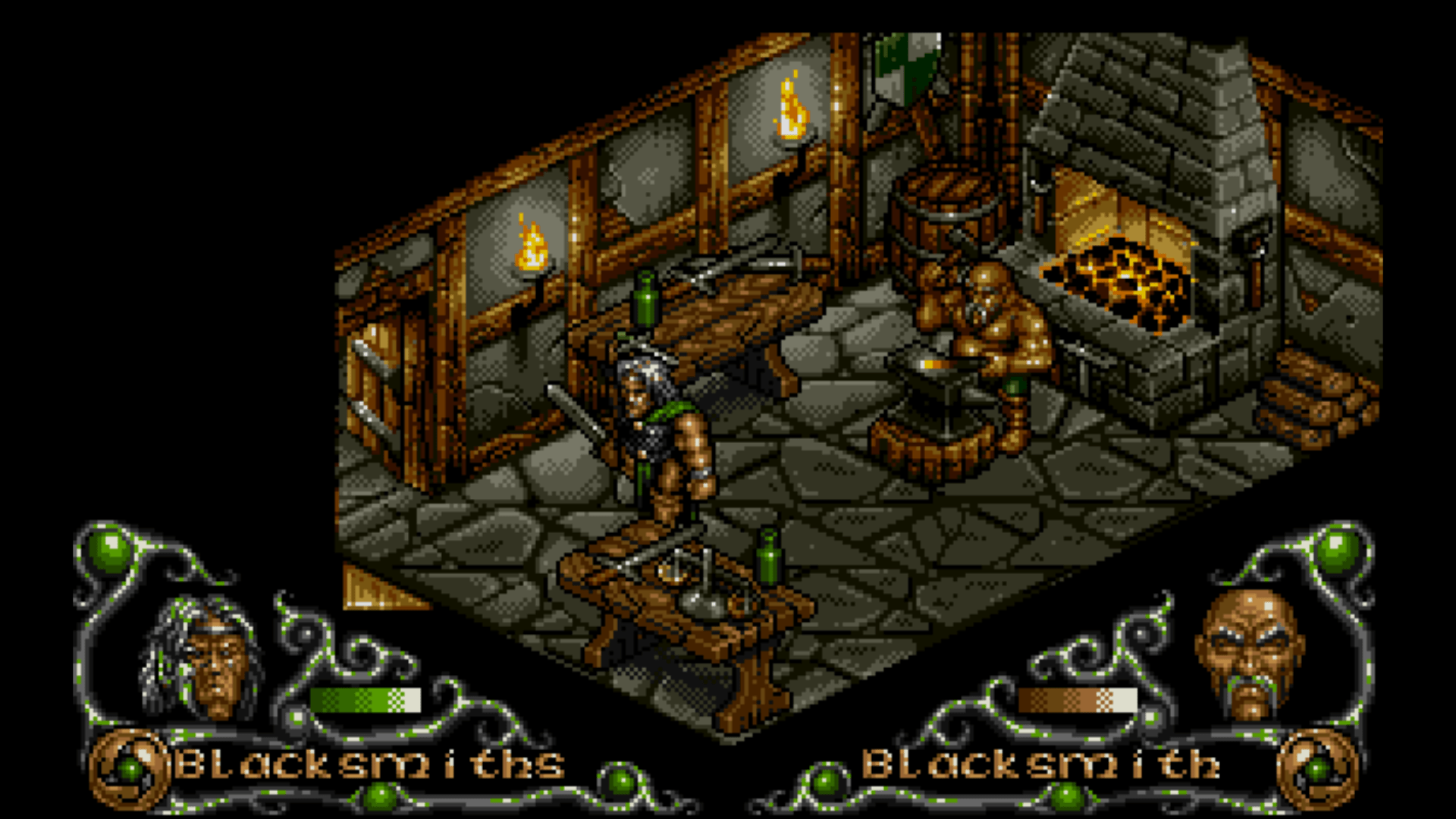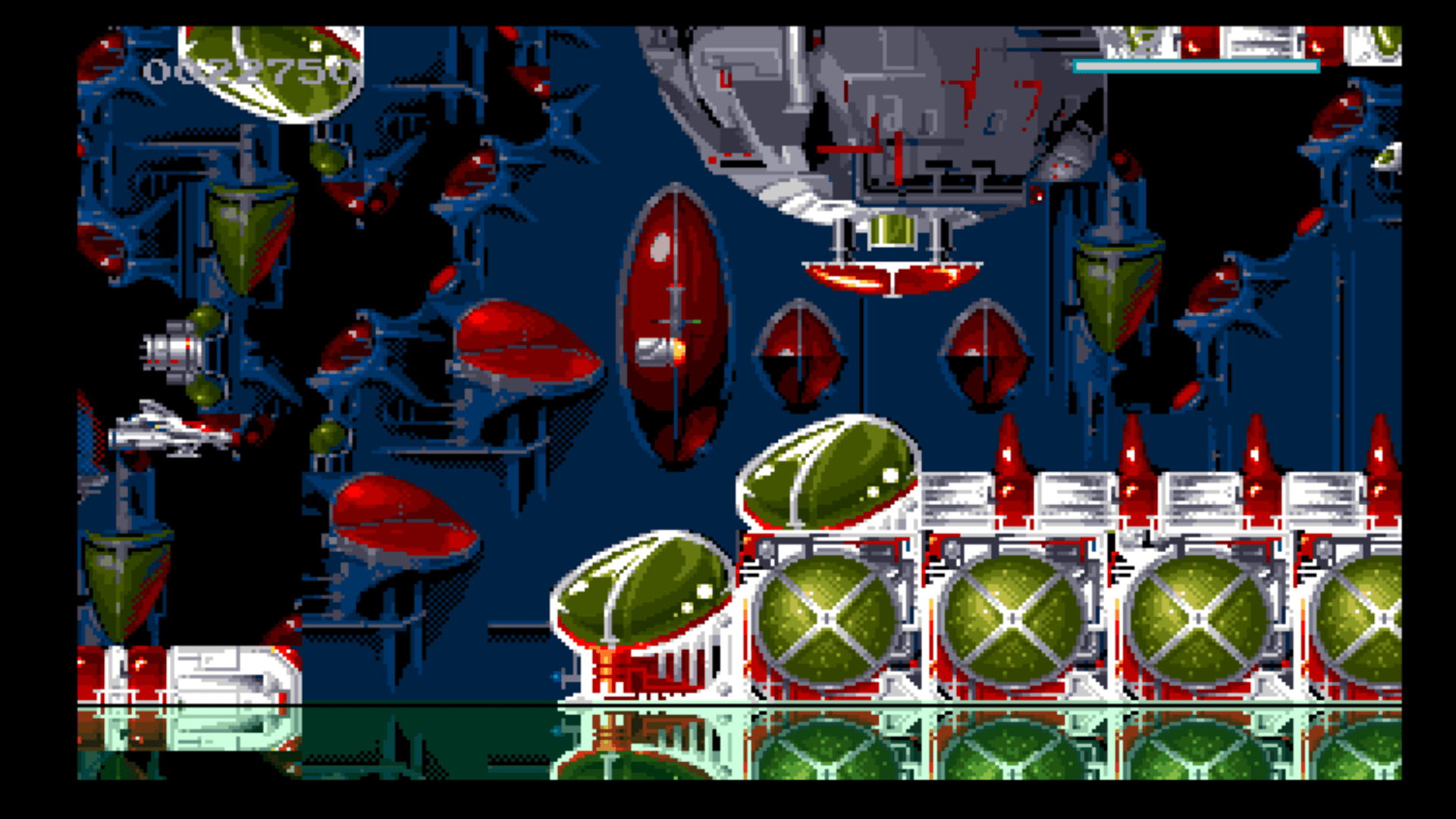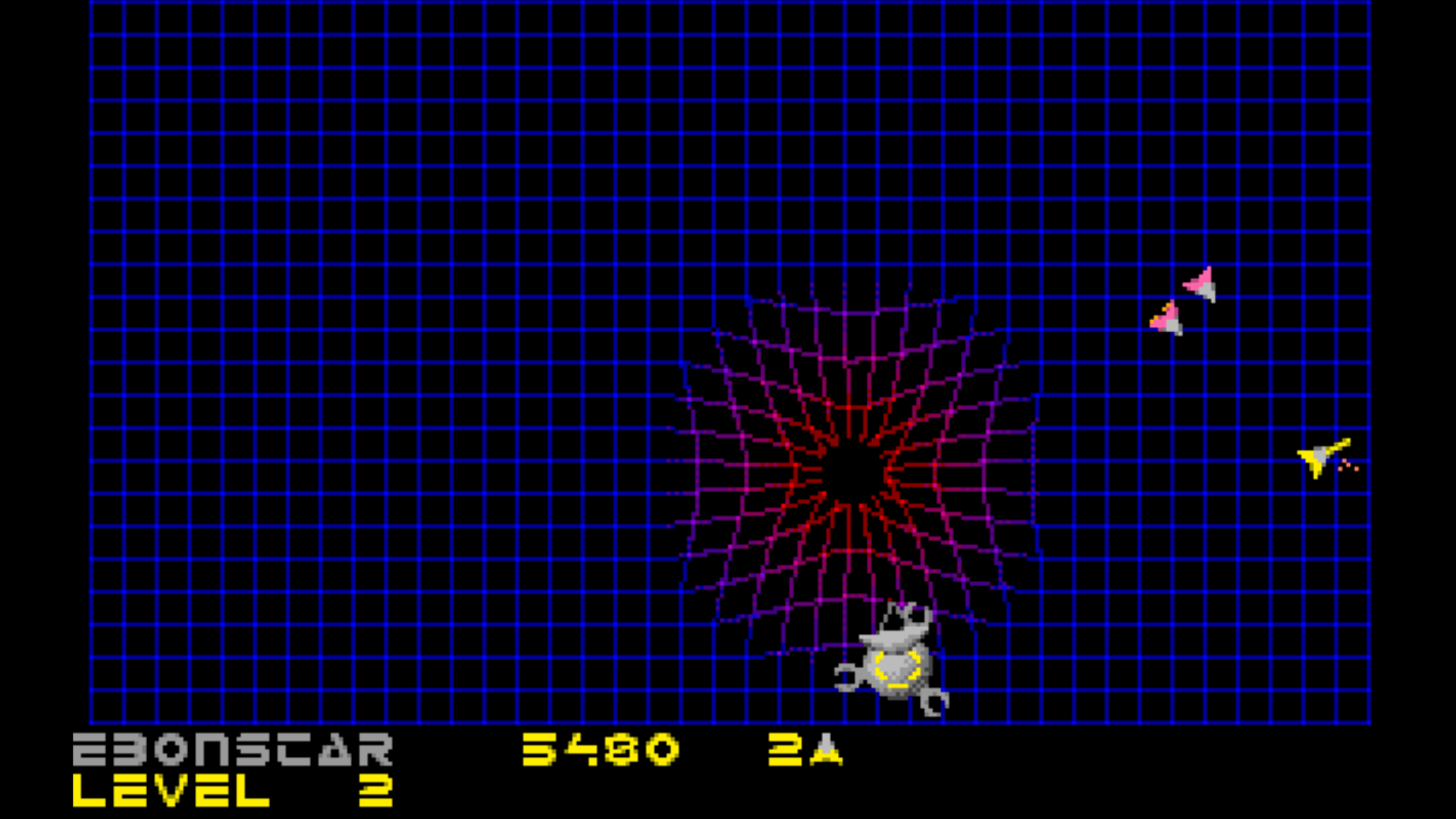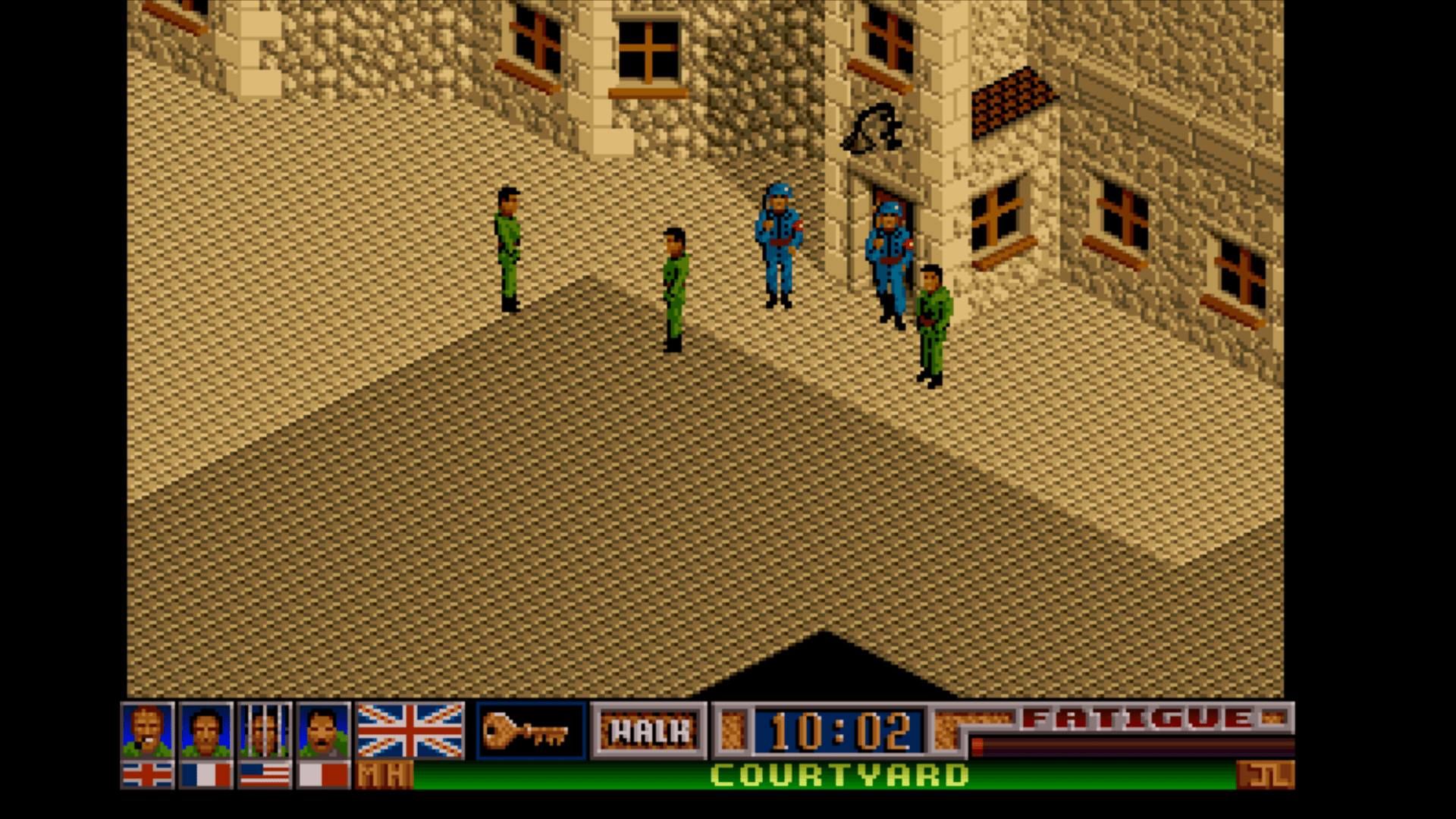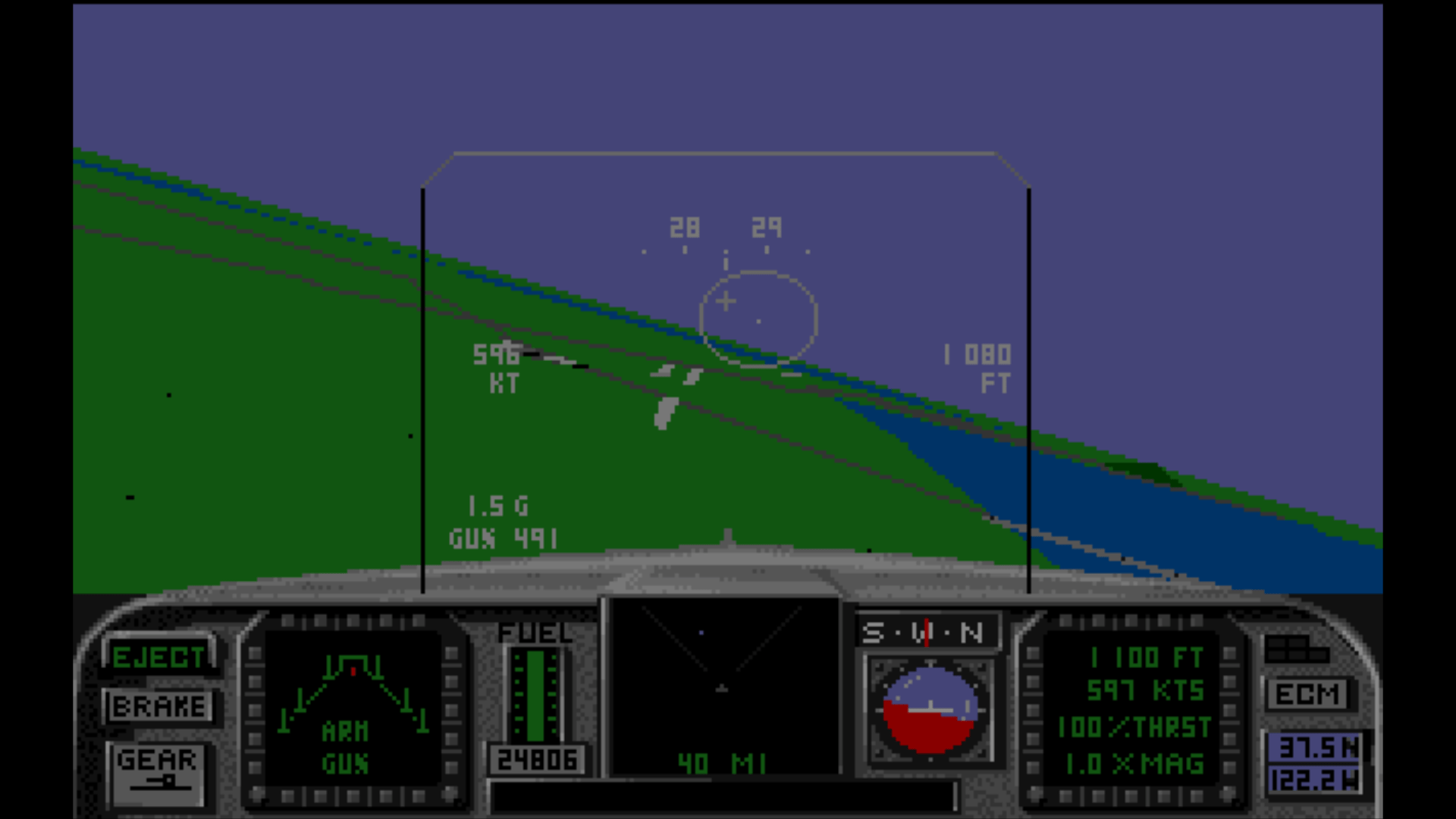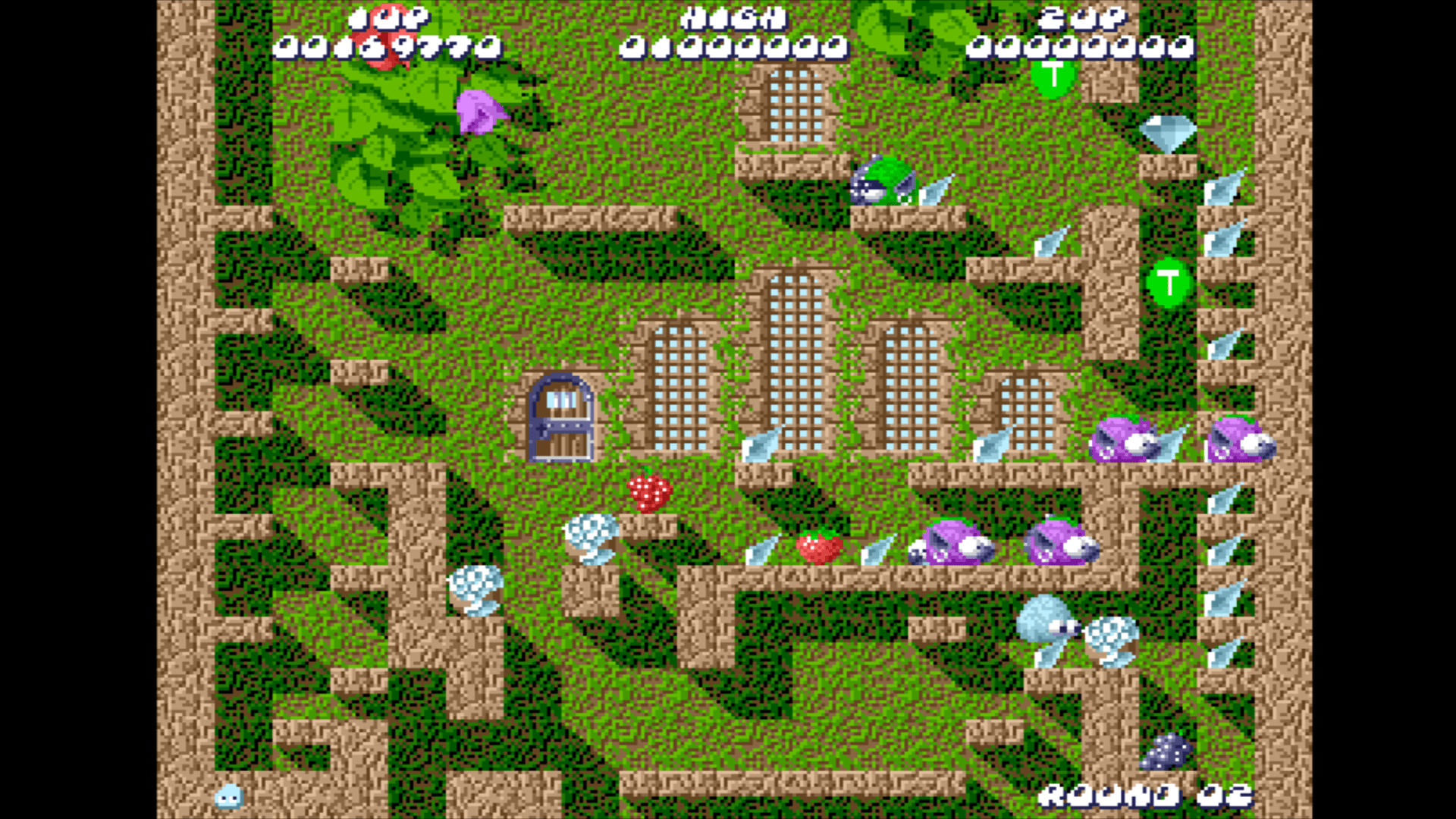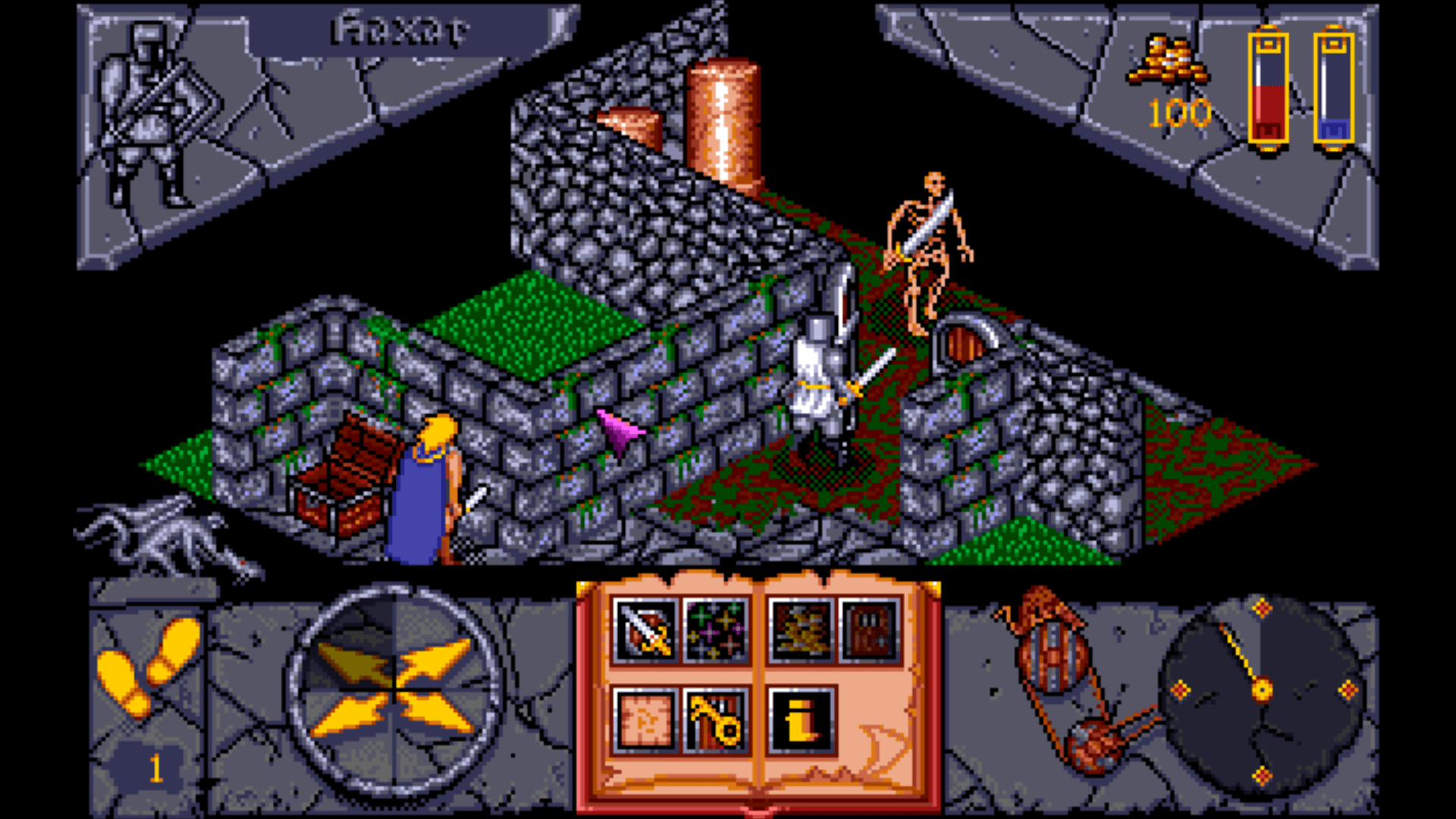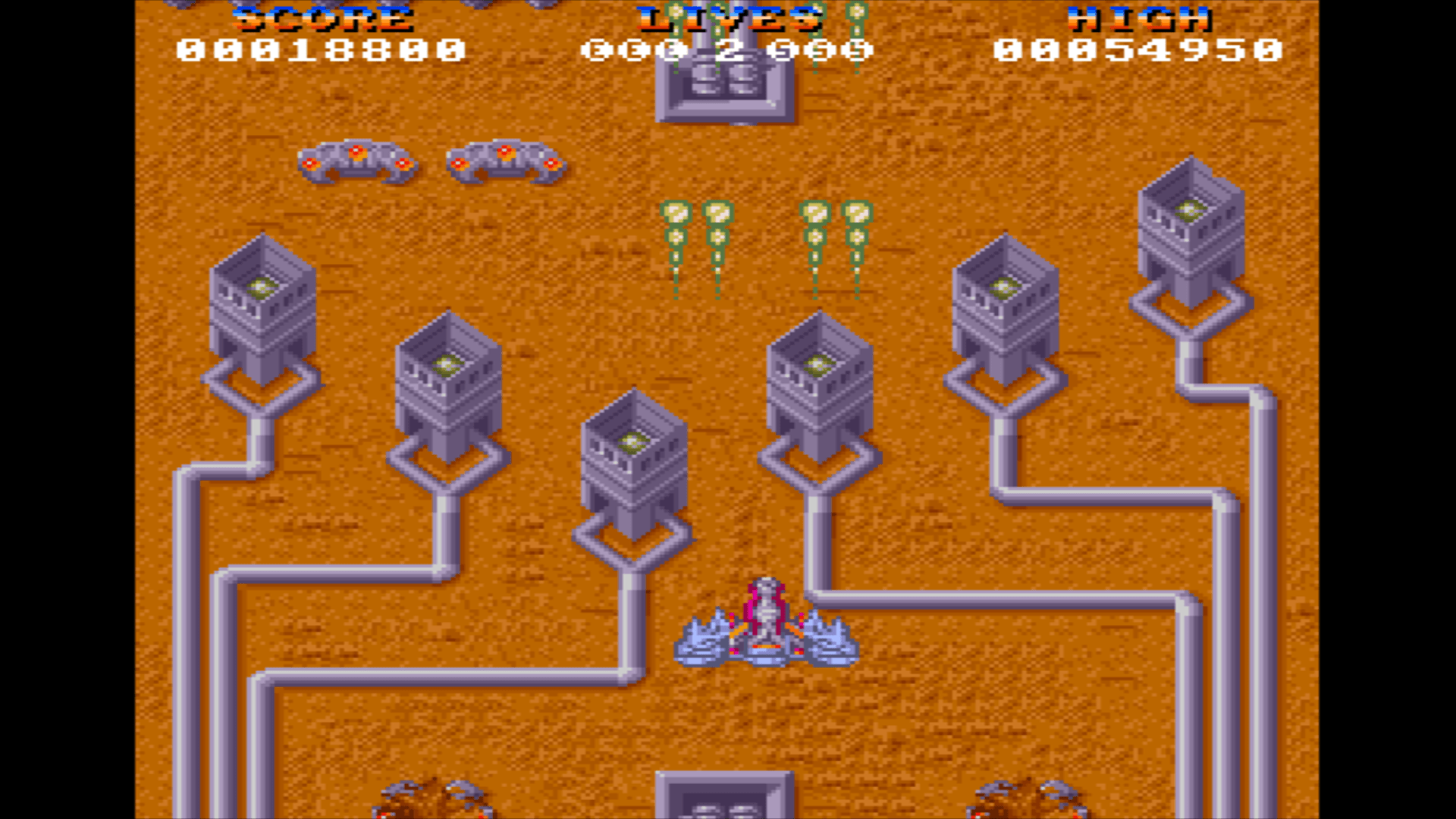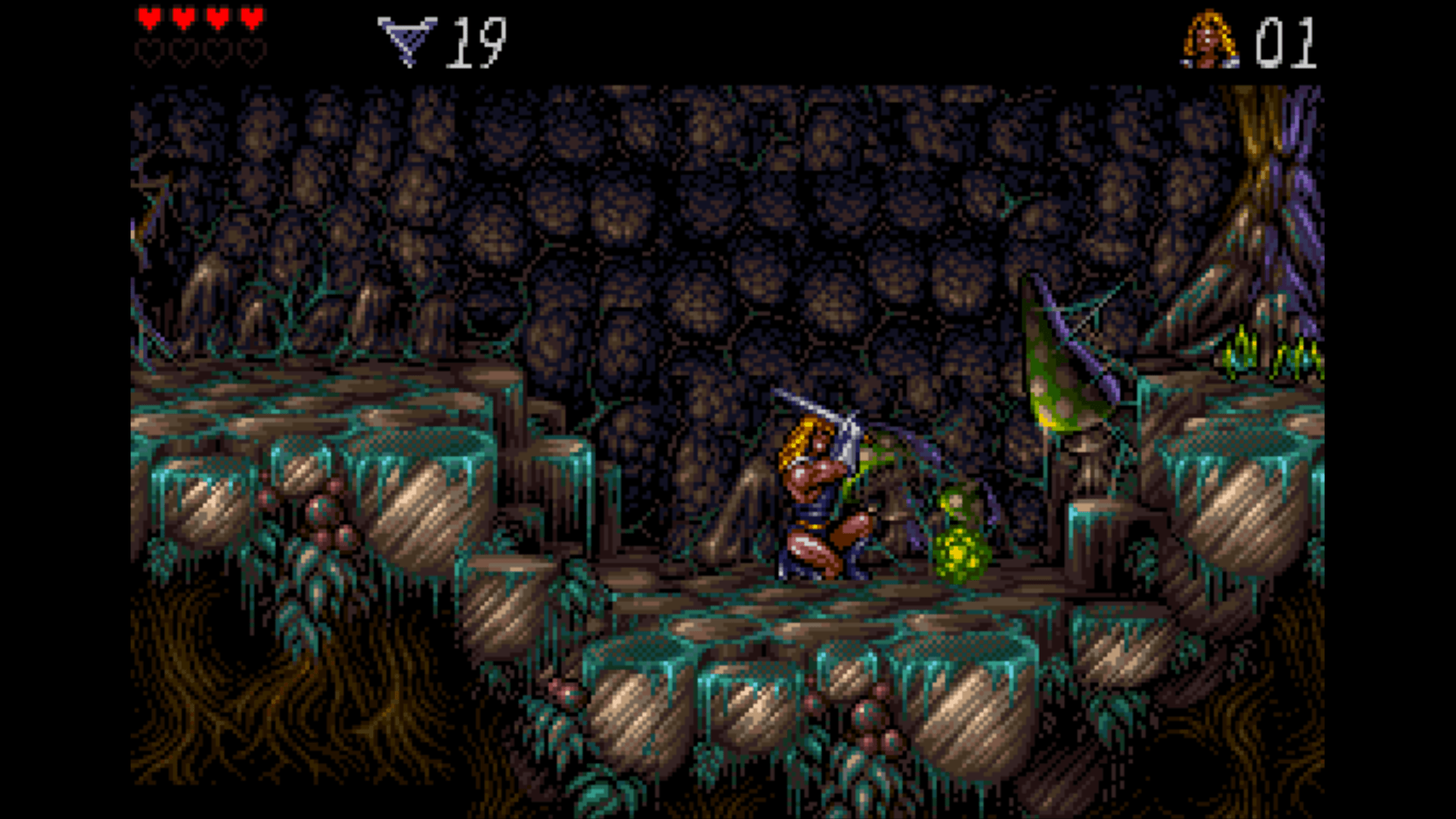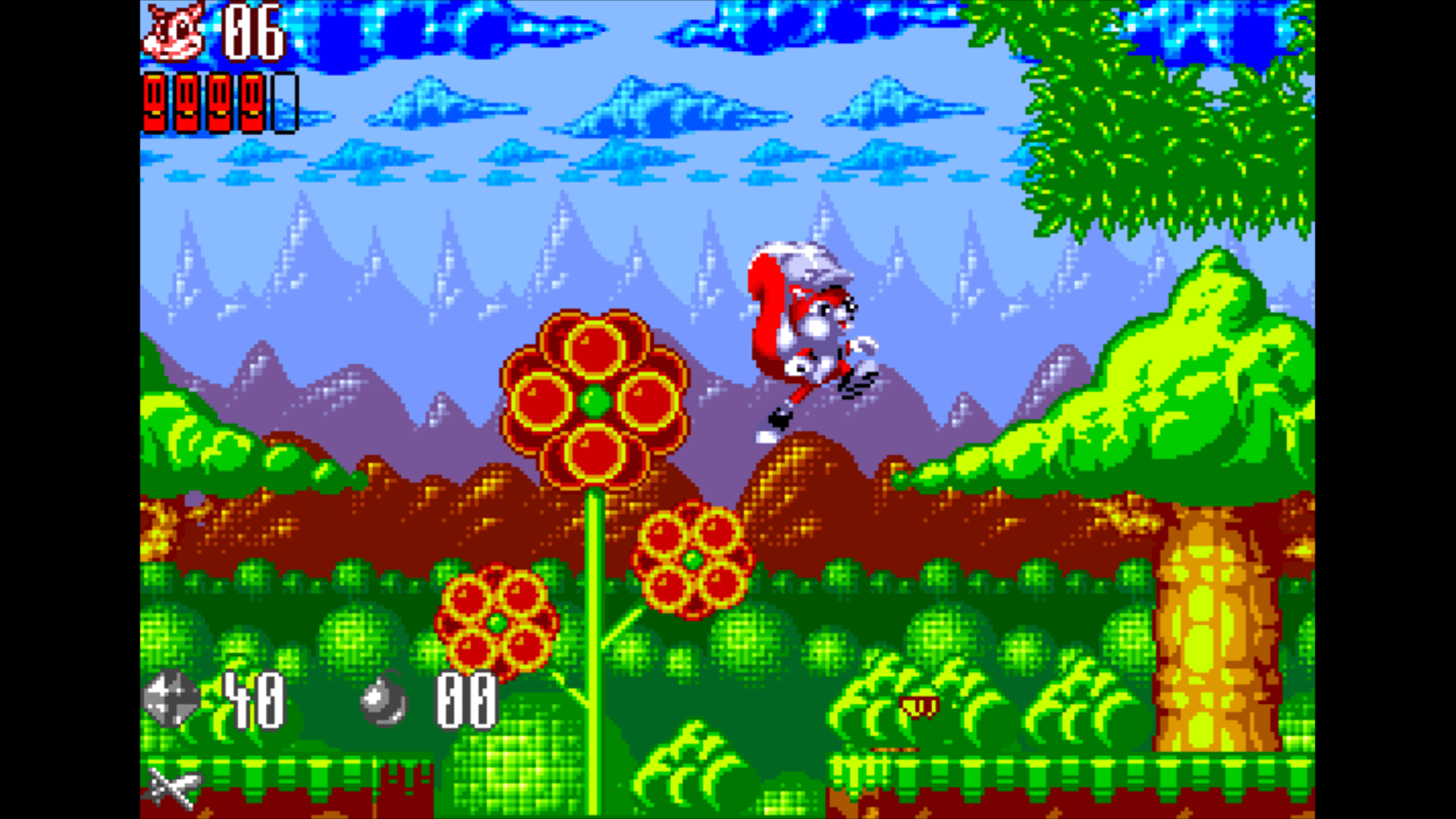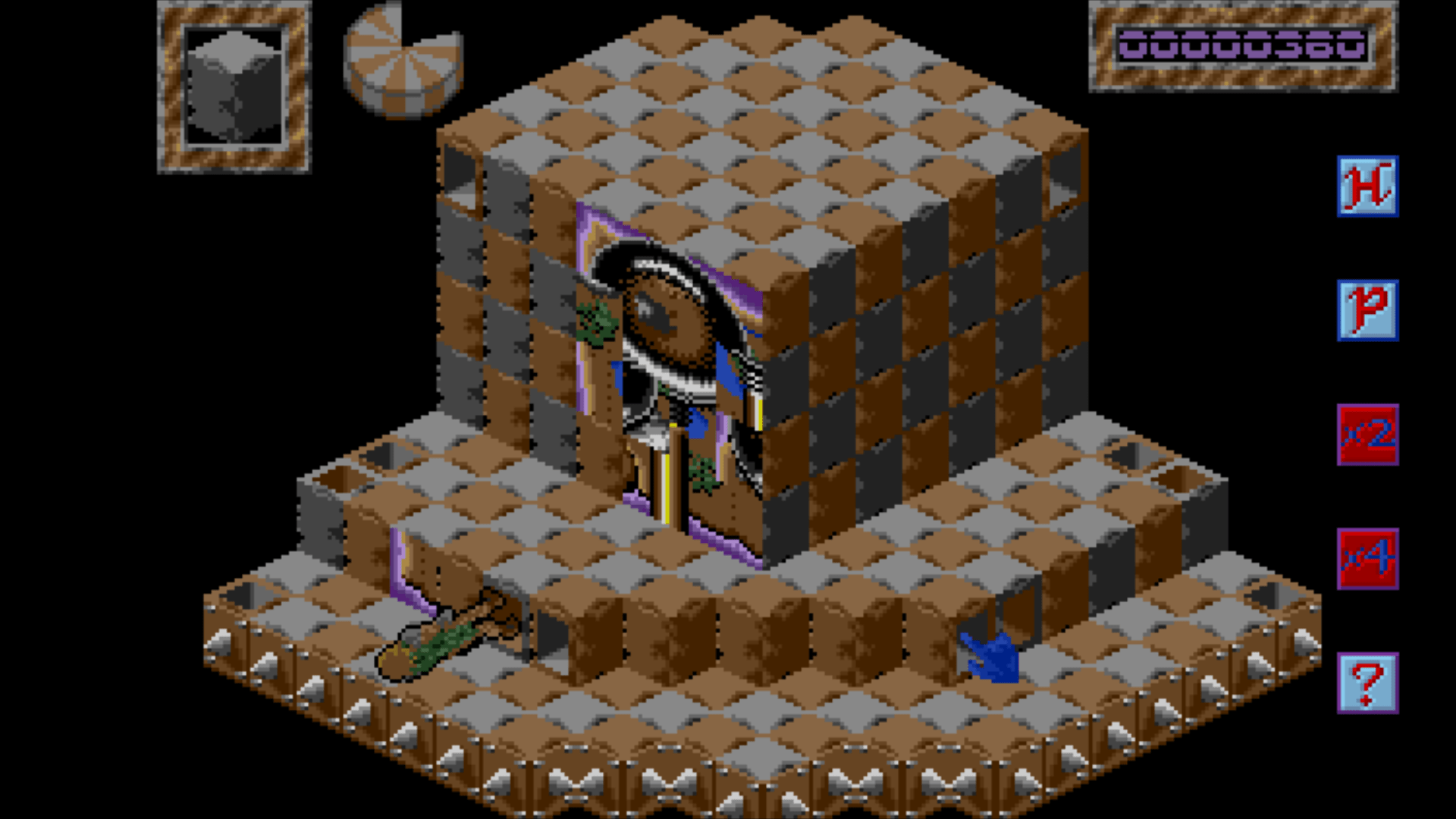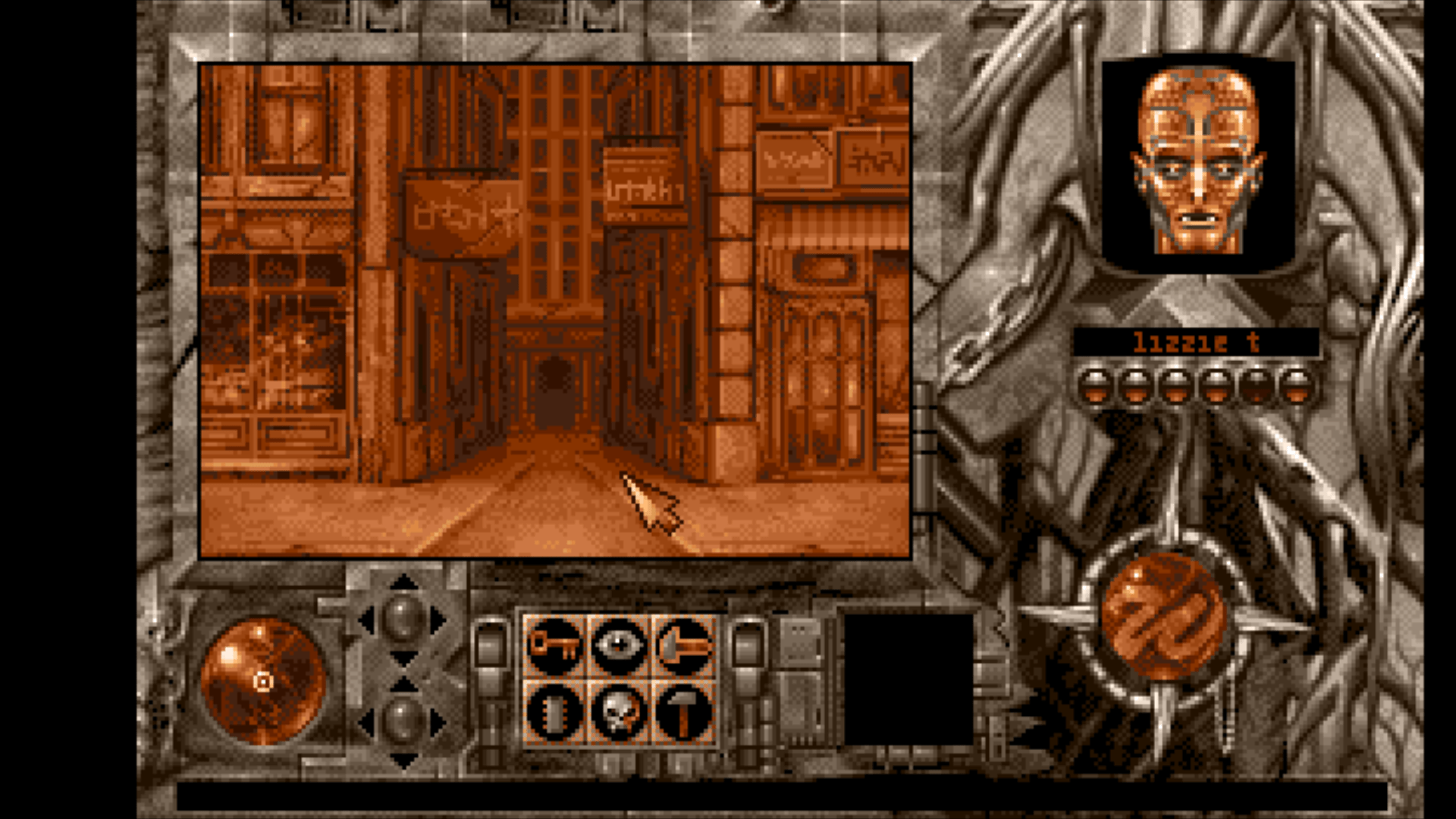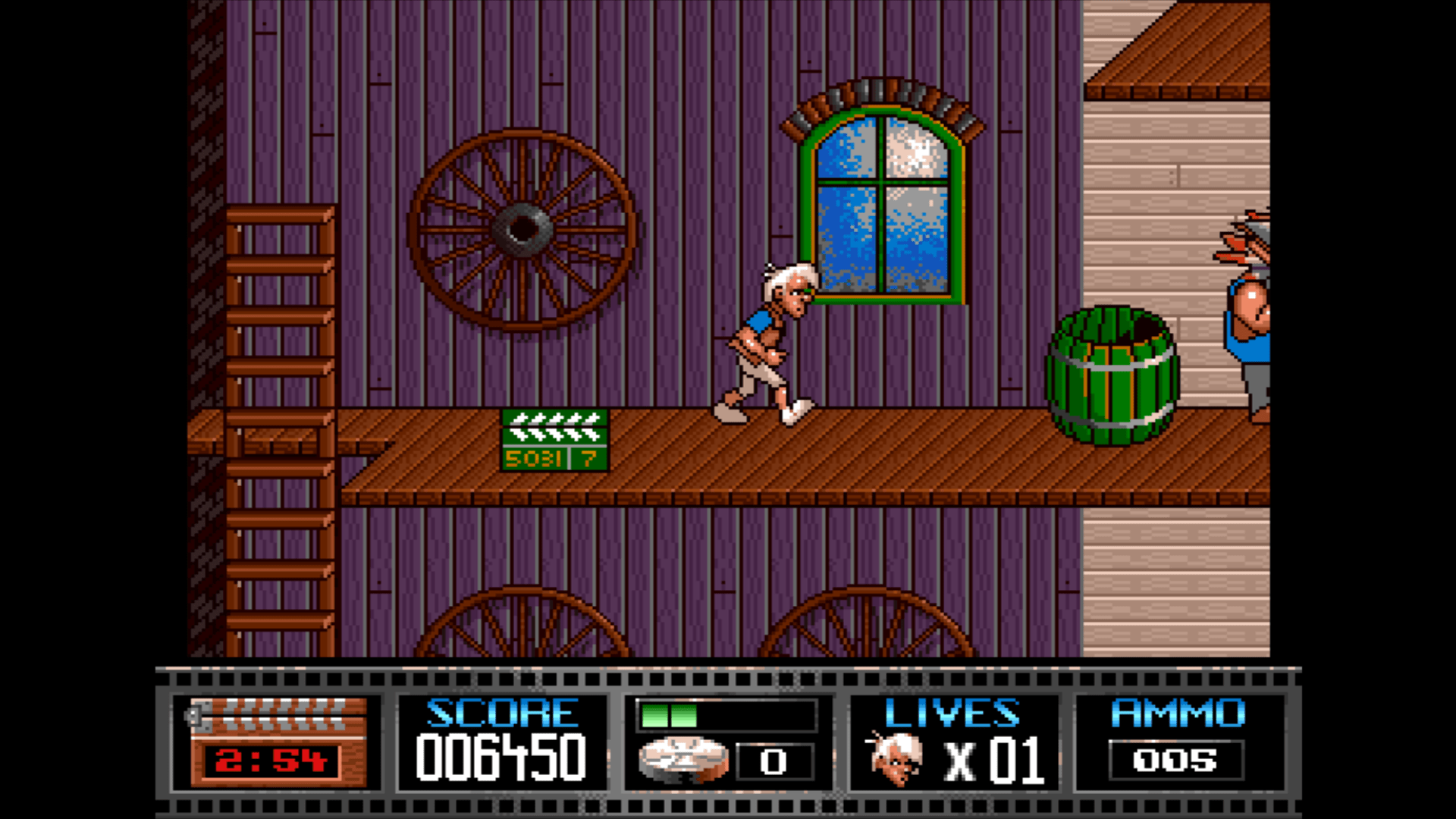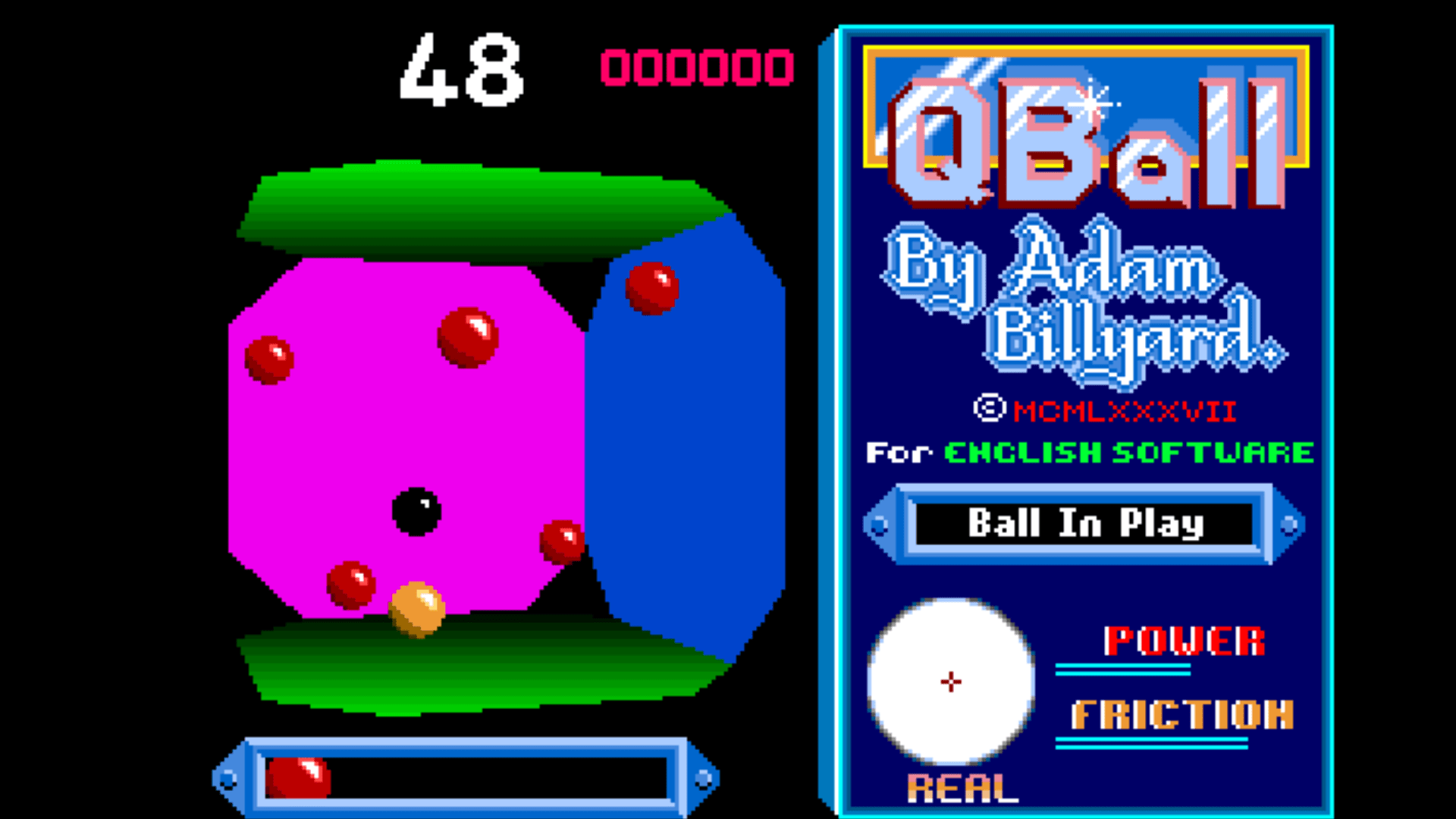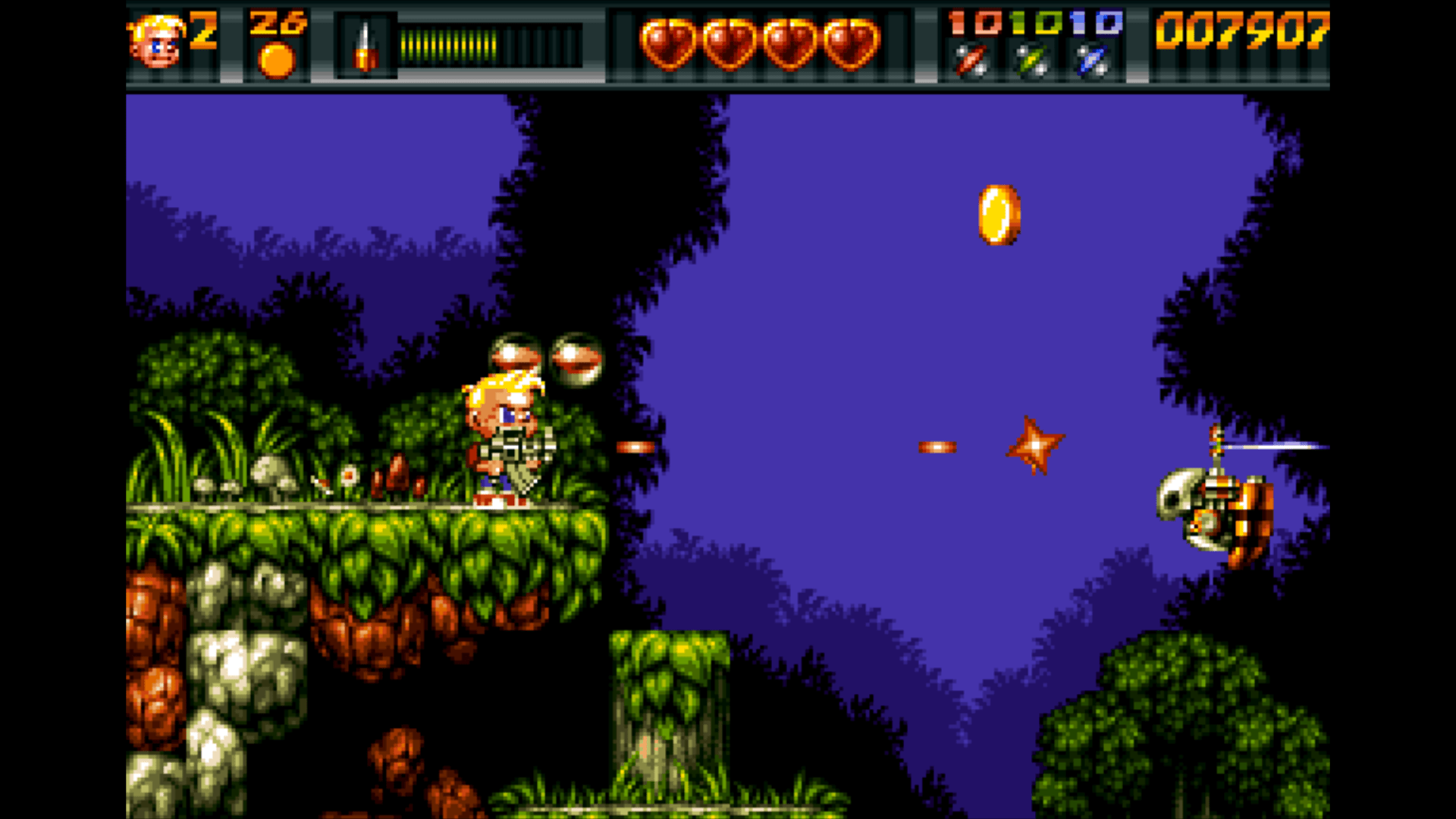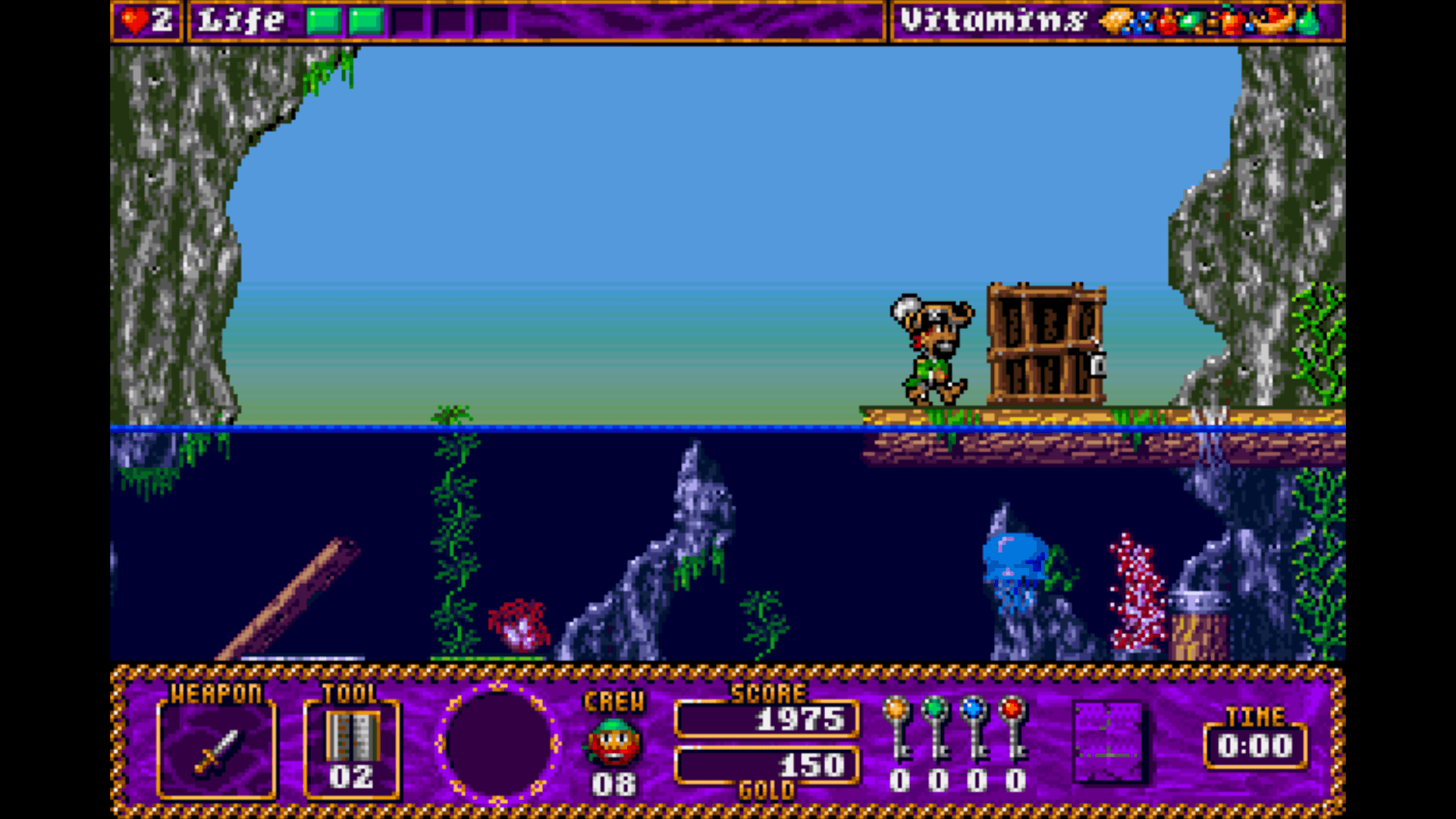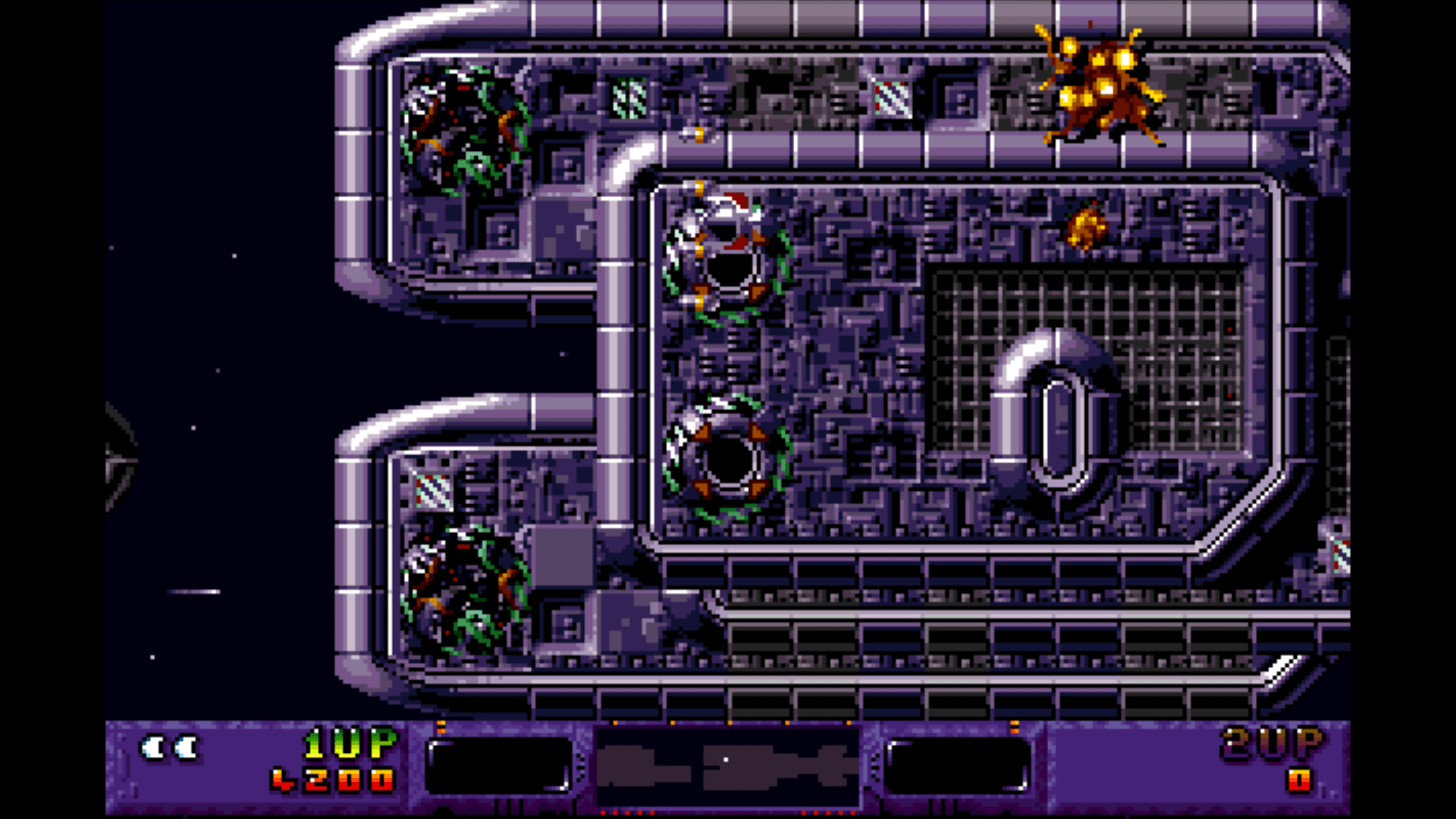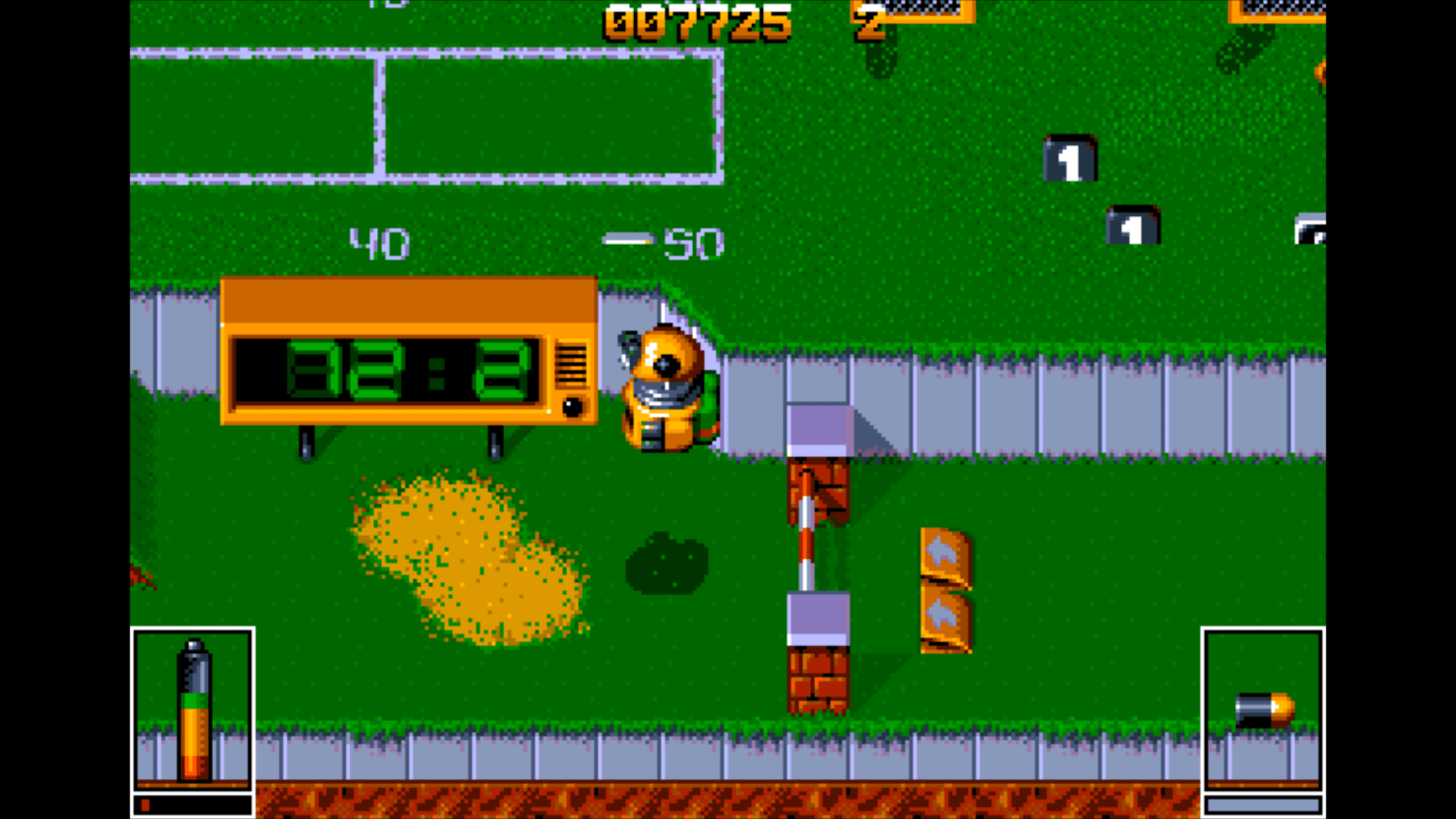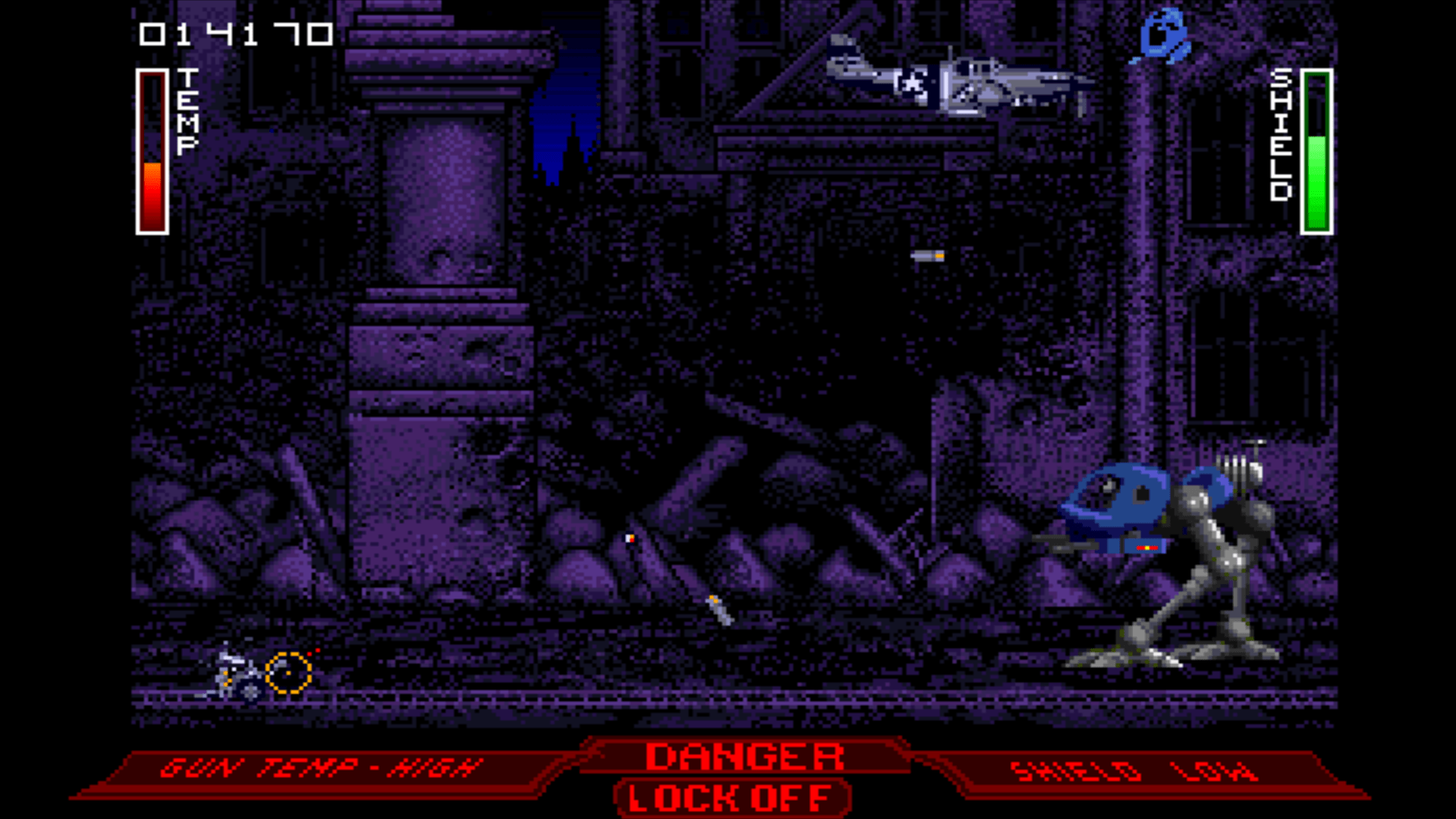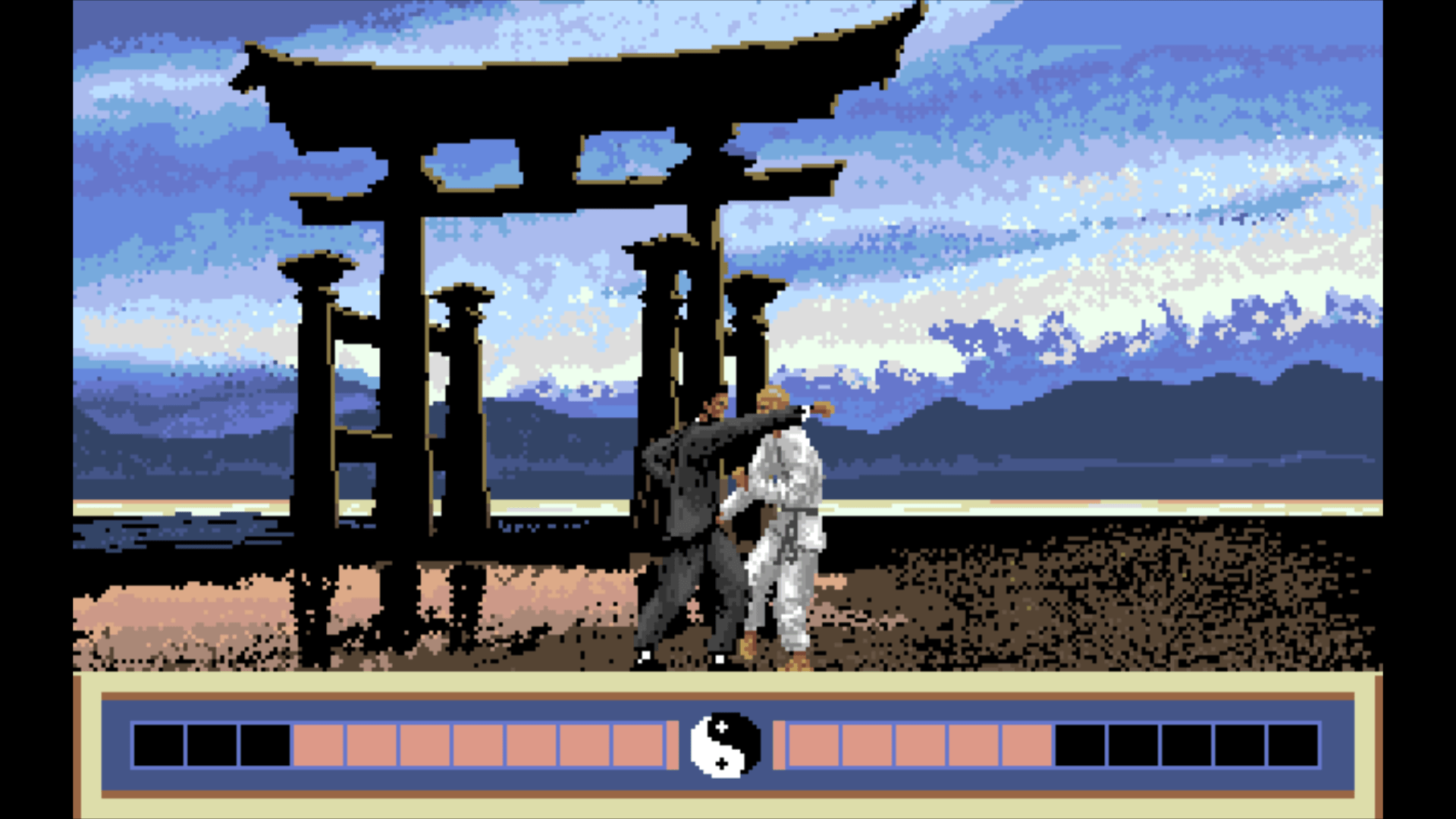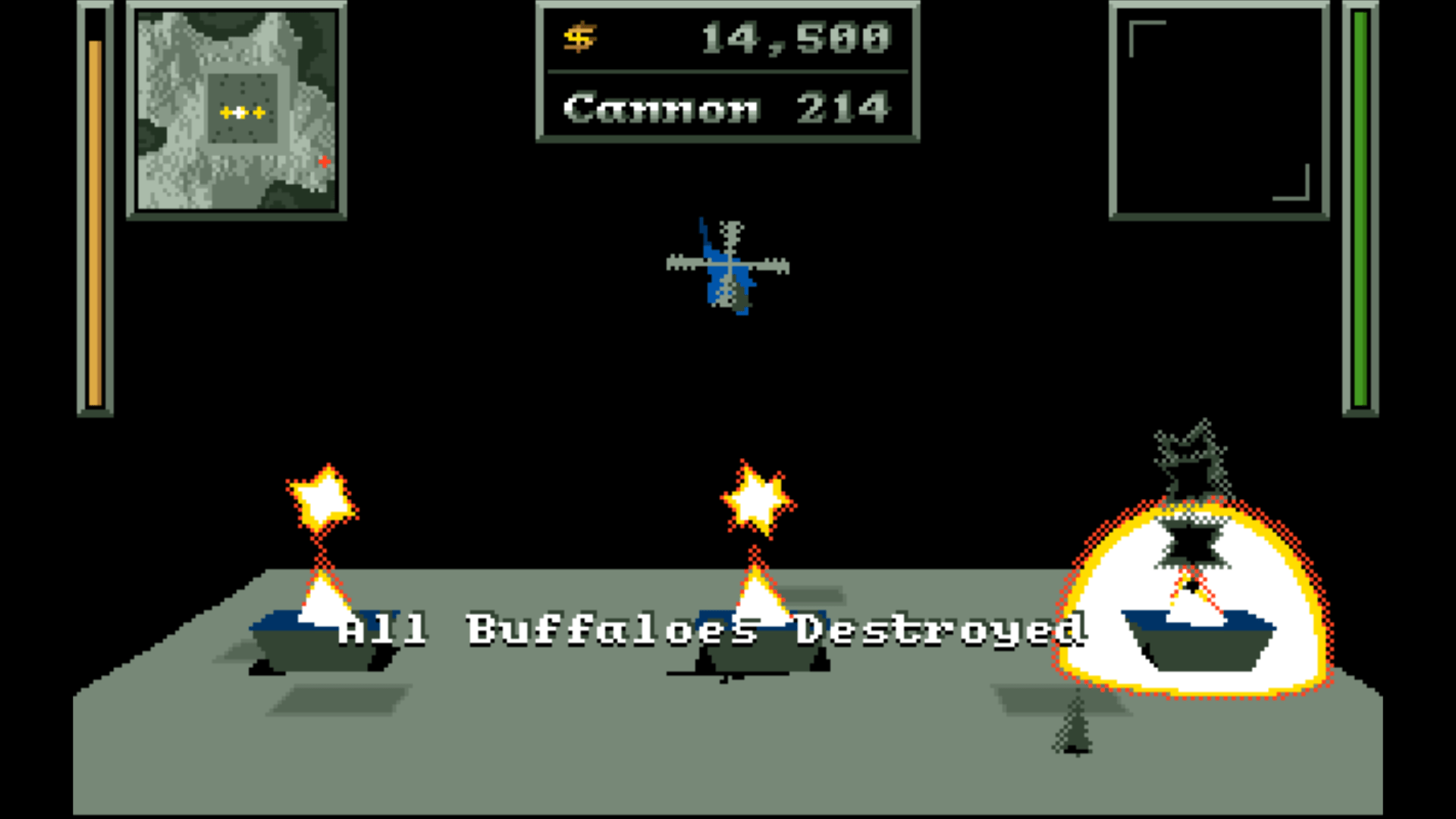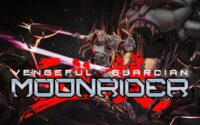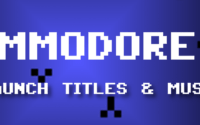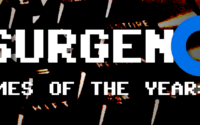Amiga Games – Part II: Exclusives
Every platforms needs a bunch of those – The more the better. And to be absolutely clear here: We’re talking strictly exclusive software now – Not games that were developed on the Amiga and appeared on, e.g., the SEGA Mega Drive or the Atari ST some time later.
No. These thirty more or even more wonderful creations happened on the Amiga and stayed on the Amiga… (The ill-fated CD32 included, being an Amiga and everything…)
1. Agony (Psygnosis, 1992)
It’s a horizontally scrolling Shmup that just had to exist… With the cute Psygnosis-owl Alestes as the protagonist. In a game showcasing near arcade-like qualities. Developer Art & Magic was this all-star crew with over a dozen people. Agony looks absolutely great from the first intro-screen to the last. Tim Wright’s piano-heavy piece on the title screen is so excellent that Dimmu Borgir’s keyboardist “borrowed” bits of it to “Sorgens Kammer”. The loading music between levels was done by guys from the Demo scene. (Tip, Mantronix, Nuke, 4-Mat… And Allister Brimble.) And Frank Sauer’s and Marc Albinet’s artwork is unique. Plus Jeroen Tel’s synthesized orchestral in-game score follows the surreal atmosphere of the game. It’s a colorful, well-animated, and hectic blaster that should be a dream to play… And in shorter bursts, I believe it is… Unless that difficulty level turns it into a nightmare. The cracks in the facade would be the uneven (Still high.) quality of the game itself. It’s just as odd as it is beautiful. Somehow, it’s a reflection of the kind of games that we expected to materialize on the Amiga. Agony’s six levels are a challenge for any Shmup-junkie… It’s a game of opposites.
2. Ambermoon (Thalion Software, 1993)
You could always rely on Thalion when it came to creating epic and heavy RPGs. (Like Dragonflight.) The renowned Amber Trilogy was never finished, and this sequel to Amberstar was the swan song. Ambermoon takes place 20 years after the original, and the player (The grandchild of the protagonist from Amberstar.) sets out on a fated journey across the Lyramionic Isles. Plus a moon. (That makes nine discs… Which translates to: Heavy floppy-swapping…!) Five NPCs can join your party. The huge overworld map is a traditional 2D top-down scrolling one while the dungeons and cities switch to 3D-views like in The Elder Scrolls: Arena. (Except Ambermoon looks tons better!) And the turn-based battles are extremely well designed with the animated monsters in one main window, and the layout of the battle-grid in the interface-window beneath it. As you use mouse controls, you have instant access to all the menus and functions. The art-style, design, and graphics work here is really impressive, and you can tell that Thalion put their hearts and souls into this project. Another fantastic aspect of Ambermoon is Matthias Steinwachs’ mournful soundtrack. It fits perfectly. Conclusion: This is one RPG that shouldn’t be missed under any circumstance.
Note: To make Ambermoon a significantly more pleasant and even more epic quest, install it as a virtual hard drive image.
3. Amnios (Psygnosis, 1991)
If Psygnosis published a Shmup around this time, you just knew it was good-times. Or at least original. But Flying Chicken Software’s top-down multi-directional scrolling (slightly) surrealistic non-stop Shooter is both. Over ten increasingly hard levels, you battle an evil entity that mutates and perverts every living thing before devouring them completely. Soon, existence itself will be threatened unless someone stops the destruction. Enter the Amnios, a space-ship with suitable abilities and nifty upgrades– Okay, so you shoot everything that moves on the ground and in the air. Just look at the radar and hunt down the vermin. You can obtain other weapons to make the blasting more effective. The controls “remind” of Asteroids, and the game has a bit of Defender in it. (As you have to rescue as many people on the ground as possible. They trail after your vessel and need a relatively safe ride to safety.) Amnios certainly relieves an itch… Apart from the slightly Soundtracker “ST-01”-fermented (But pretty good.) title-screen tune, there’s no in-game music. (Always unfortunate.) But the soundscape and FX are good. The graphics have a very “arcadey” shine and design to them. It’s just the scrolling that could’ve been a bit smoother.
4. Apidya (Play Byte, 1992)
Ikuro’s waifu Yuri has been poisoned by an evil bastard called Hexaae. And he has turned Ikuro into a bee. Fortunately, this is one bee that can shoot and bomb stuff across horizontally scrolling levels infested with enemies of all kinds. Yep. Apidya (Jokingly named “Apidya II” on the title screen.) is a Shmup that despite its Japanese influences is as German as Volkswagen. And it looks, sounds, and plays like the Best of these genre-games. The controls are responsive, the background graphics are incredibly varied (Each “world” is divided into three sections.), the game frequently surprises the player, and it has several settings that usually are found in Coin-Ops, e.g., the “Dual-button Joystick”-setting for activating the eight Power-ups. Apidya also efficiently uses any extra RAM to minimize loading times. Four difficulty levels are selectable as well as well as a two-player co-op mode. (The second player controls a smaller bee.) But the jewel of the crown is Chris Hülsbeck’s soundtrack. It just sounds… “Coin-Op”-esque and stupendously ideal… Plus each world has its own theme with melodies that immediately super-glue themselves to the brain. And as if all this wasn’t enough, there’s an atmospheric intro and the obligatory wholesome ending.
5. Arabian Nights (Krisalis Software, 1993)
Sinbad The Kid loves to stalk–watch Princess Leila, but one day, she’s kidnapped by a DEMON. (Nice console-game style intro.) The spontaneous rescue attempt fails and Sinbad ends up in the palace dungeons. Luckily (For the game mostly.), he escapes from his cell. Now, he has to fight through nine levels to save Leila. This includes platforming action, swimming, minecart-riding, magic carpet-flying, etc. Additionally, Arabian Nights includes arcade adventure elements where you have to interact with NPCs as well as the environments. The game plays like the best console-games at the time… That is: If you use a two-button Joystick with a “Select”-button. (You hammer the Space-bar for “Select” otherwise.) Due to its Amiga exclusivity, this is sort of a “hidden” gem in the bunch. Krisalis totally outdid themselves with this one. Three difficulty levels grant the longest possible lastability. And if you use expanded RAM, the game also loads “faster” and stores recent levels in the memory. Plus you get additional visual details. (This can be selected via the menu.) The very suitable “Middle Eastern” soundtrack thankfully includes in-game music. Sure, some instruments are (overused) classics, but I guess it’s a part of the charm in this case.
Note: Also released on the Amiga CD32. (The difference between the two versions isn’t exactly overwhelming.)
6. Banshee (AGA) (Core Design, 1994)
This vertically (and slightly horizontally) scrolling Steampunk-style Shmup “happens” to be an Amiga exclusive, AND it exclusively utilizes AGA graphics. (Meaning: Fire up an A1200 or better.) This was a couple of years before Core Design got “stuck” developing one “Tomb Raider”-game after another. But Banshee, their STG-swan song, looks like a timeless arcade game that has aged like the finest wine. A couple of brown-tinted illustrations tell the amusingly quirky story during the intro-sequence. They’re matched with perfectly somber music by Martin “Nuke” Iveson, so the atmosphere is properly set before you select between the one- or two-player mode (Simultaneous action! Plus there’s a “Keep Players On Screen”-option.) as well as difficulty level. (Non-Spoiler: “Normal” is already tough as nails!) Banshee “only” has four levels, but they’re not exactly five-minute ones. And there’s a hell of a lot going on in each. (Everything from impressive weather effects to huge middle-bosses and animated machinery.) Power-ups are of course a must too. The game has no in-game music, but there is a big variety of excellent sound effects creating the proper soundscape of an armed conflict. The title-screen tune (Very 1999 Steampunk!) is good, but some more music would’ve been super-welcome.
Note: Banshee was also released on the Amiga CD32, but that version doesn’t seem to have any noticeable differences over the original one.
7. Benefactor (Psygnosis, 1994)
Digital Illusions shows here that they could do other games besides Pinball-themed near-simulators. Now, of course there are tons of classics that this particular game pays homage to and reminds of. But what’s a really good game if it doesn’t have some neat, original features and that extra polish…? Hero Ben E. Factor runs, climbs, and leaps around 60 levels while trying to rescue “Merry Men” (Small humanoid-looking aliens.) our of their cells. So. Keys are needed. Switches need to be flipped. And buttons need to be pushed. The Merry Men also help solving environmental puzzles, and Ben can help them in return by hoisting them up on platforms and such. The goal is to get the Merry Men to the exit. (Followed by Ben.) Benefactor has three difficulty modes, and on the Hard one, you can imagine how diabolical the puzzles turn at some point. Ben has a health bar (Thank Satan.) and a radar that shows the level and all Merry Men. Graphically, the game is a minor delight. Everything is small, but the details and animations are lovely. The funky soundtrack fits right in as well… But it’s puzzling that Benefactor never made it to non-Amiga platforms.
Note: And Benefactor too found its way to the Amiga CD32.
8. Black Crypt (Electronic Arts, 1992)
The first time you play this hardcore RPG (Which originated as a pen-and-paper variant.), the adventure probably turns into a slaughterhouse in plus minus a couple of minutes. The “Soundtracker”-fragrant title-screen music notwithstanding, this is one atmospheric dungeon crawler from Ye Olde School where games like Eye Of The Beholder reside. Except this one hits everybody pretty mercilessly from the very beginning. (Like with a Boss right at the beginning…! Hint: It’s not a good fight to start with.) But you know the deal. Evil bastard No. 1 has to be neutralized and there are two dozen monster-infested dungeons ahead of you… You create (More like: Select the class for your characters and name them.) a party of four before diving headlong into a world of pain. Mouse operation is smooth as shit, and the interface follows some of the unwritten rules of computer RPGs. You just need to have one good system for menus, etc. Black Crypt has precisely that. And it uses the Amiga’s Extra Half-Bright additional 32 colors to the current 32 color palette… Good stuff… This was Raven Software’s first game, it’s and a must for “irremediable” genre-fanatics. It even surpasses Dungeon Master in several ways.
Note: To play this game, you need a disk called “GAMESAVE”. You can create an ADF-file for that purpose, but you have to rename it in Workbench a.k.a. Amiga DOS. (Just renaming the ADF-file won’t work.)
9. Crystal Hammer (reLINE Software, 1988)
It can’t be denied. If you don’t have a paddle controller like in many Breakout games in the arcades, the next best thing for this specific genre is the mouse. And that is what most (?) Amiga “Breakout”-clones are designed around. Crystal Hammer is no exception. Karsten Obarski’s iconic and classic theme graces the title screen, and it’s one of the original Soundtracker-tunes which exclusively uses the (later notorious) “ST01”-instruments… So this is Classic Breakout with everything that’s implied. And you all know what Breakout is. Amegas was good (And the Arkanoid-port was admittedly better.), but this is an improvement on many fronts. And I believe it’s quite a bit harder too with slightly dream-logical ball physics. Like most similar games, there is only an alternating two-player mode. And those necessary Power-ups that make the gameplay easier. The Power-up pods are revealed when random bricks are hit / destroyed, and you have to catch the pods as they float down the screen. Power-ups include a laser cannon, a larger bat, magnetic force, and so on. (The white one is a suicide “Power-up”.) Crystal Hammer isn’t too radical, but it manages to stick out for some reason. It’s probably the exclusivity.
10. Darkmere: The Nightmare’s Begun (Core Design, 1993)
Zero Hour Software’s flip-screen isometric adventure game immediately reminds of Ultimate Play The Game’s heydays. Darkmere’s Fantasy-setting teleports you, Ebyrn, into a pretty big village. Your mission: To obliterate the evil influence (Darkmere) that has turned your world into this dark (but admittedly quite beautiful) realm… The game may not look like it’s particularly dialogue-heavy, but there are numerous NPCs to talk to, plus quite a few options to go through via the parchment-looking menus and pages. It’s a classic and familiar story, but the depth of it makes it the more interesting. The usual walking around, hacking/slashing, and searching through the surroundings is only one part of the game. (The game even includes descriptions for different doors.) But you also stumble upon your fair share of tasks that you have to complete in order to progress. After the village, you end up in a big forest before entering the caverns of Certain Death… Darkmere certainly is a love letter to the, at the time, not very Old School adventures. And it does everything within that genre (and beyond) so well. With the thick atmosphere and poetic descriptions, there’s just something that should please as many adventure enthusiasts as possible.
Note: Followed by Dragonstone in 1994, which also is an Amiga exclusive.
11. Disposable Hero (Gremlin Graphics, 1993)
The Boys Without Brains, you might know, developed one of the best Commodore 64-games in existence, which was Hawkeye in 1988. Five years later, they (Along with Euphoria.) made a grand return with something as beautiful as a horizontally scrolling Shmup with lush, spectacular graphics, a hard hitting Electronica soundtrack (That you just have to turn up!), smooth scrolling, imaginative design, and perfect gameplay… And yes, it’s hard as hell. If the “Easy” and “Normal” modes make the six levels a breeze, there’s also “Hard” and “Arcade”. But that’s not all. Spread out all over the levels, you’ll notice these semi-translucent domes which you can land inside. These take you to the shop / weapon upgrade system which is way more sophisticated than it looks. There is a whole bunch of juicy firepower that you can use to your best abilities to wipe out those attack waves plus middle- and end-of-level-Bosses. Disposable Hero also has a neat title menu, an atmospheric intro-“computer terminal”, and a proper ending. It’s arguably one of the finest Shoot ‘Em-Ups for the system and makes many others look tame and unpolished in comparison. (There were quite a few of these on the Amiga as well!)
Note: Released on the Amiga CD32 a year later. (With the lovely professionally recorded music on the disc instead.)
12. Ebonstar (MicroIllusions, 1988)
The Amiga too had a couple of games that turned everybody into someone worse than Hitler. Ebonstar is quite possibly one of them, and it takes place on single-screen levels which look like blue grids. On this grid opens a black hole that a rotating vessel randomly transports around the screen. The idea is simply to not get sucked into the hole. To beat a level (That’s: Disintegrate the grid.), you have to, with the kinetic power of your bullets, push enemy ships into the black hole and also destroy the aforementioned vessel. The bullets fly across the grid as long as you don’t press the Fire-button. (Each “Fire” launches a new bullet and the previous one disappears.) The levels constantly get gradually harder as different types of enemies enter the grid. But there are also some weapon upgrades that help you sending those bastards into the obliterating nothing… Ebonstar has a simultaneous four-player mode as well as a Demo mode. And the game can be controlled with either a mouse, Joystick, or keys. (In single-player mode, the enemies are obviously controlled by the CPU.) Ebonstar reminds of old school Coin-Ops, and… When has that been a bad thing? Never.
13. Escape From Colditz (Digital Magic, 1991)
If you love The Great Escape on the 8-bit platforms and at the same time love the board game by the same name as this computer program, then you’re in for a treat. Bjørn “Dr. Awesome” Lynne’s superb tune “Niagara” (Used without his permission.) graces the title screen before the game places four prisoners at Colditz Castle. The dudes (All from different countries.) are kept in different quarters of the castle, and now the search for lock-picks, keys, shovels, etc. begins. The idea is, you guessed it, to GTFO. Guards must not spot you where you’re not supposed to be, and if you’re caught, you’re sent to isolation for some time. And you’ll definitely get shot if you don’t stop when the guards chase you. (Even if you happen to wear a guard’s uniform.) Half the fun of the game is to map it and figuring out how to get to the next section. (Colditz has way over a hundred rooms, sections, and corridors.) The game plays very well, but it’s also obvious that Digital Magic had bigger ambitions with the concept and intended to include more features. (I remember reading something about “memory limitations”.) Still: A lovely (Exclusive!) game.
14. F/A-18 Interceptor (Electronic Arts, 1988)
Intellisoft’s flight combat simulator showcased early on what the Amiga really could do with filled vector-graphics in combination with speed. This program lets you fly an F/A-18 Hornet or an F-16 Falcon. But it’s the Hornet that you pilot on the six varying missions around the San Francisco Bay Area. Getting the machine in the air is no problem. But it’s the controls that take time mastering – Especially if you fancy landing at some point. Or if you want to survive the dogfights. A number of airfields can be landed on, as well as the carrier U.S.S. Enterprise. A couple of external views are also available for getting even closer to the that “Top Gun”-experience. And a game of this caliber of course has to begin with something that very much resembles Harold Faltermeyer’s composition (Complete with the Tubular Bell sound from the Yamaha DX7. It’s simply a requirement.) from said movie. The game also lets you fly freely to get to know how the air-craft behaves under your control. Amazing is the fact that the Motorola 68000 handles this game like it’s actually IN the “Danger Zone”…! There simply couldn’t be anything like this on the 8-bit machines…
15. Fuzzball (System 3, 1992)
This Bastard Hard but tremendously cutesy platform game was made to bring some fine Coin-Op action to the Amiga. Two guys from the Demo scene (Thomas Dahlgren and John Atle Kroknes.) developed Fuzzball with the ambitions to find work in Japan… The game looks slightly familiar if you have played classic arcade platformers. The titular Fuzzball has to collect all items on screen and preferably kill all monsters. The fuzzy ball can incapacitate enemies by spitting balls at them. A defeated enemy turns into a smaller ball and has to be knocked off screen before it shape- and color-shifts. (And becomes stronger and faster, making it harder to kill.) You need a fast trigger-finger when jumping towards a platform that’s crawling with enemies. And you need reflexes and perfect timing when leaping between said platforms. Fuzzball doesn’t really play like Bubble Bobble. It has a different feel to the controls, and the levels are quite challenging from the get go. Plus it’s very “Coin-Op”-like in its structure. (Except you can’t insert new “credits”.) The only way to get extra lives is to keep playing and getting higher scores… The graphics? They’re properly Amiga-good. And the soundtrack is of course excellent.
16. HeroQuest II: Legacy Of Sorasil (Gremlin Interactive, 1994)
Where HeroQuest still “kind of” resembled the board game, i.e., when it came to the aesthetics, the sequel goes 100% “computer RPG” with more varied Fantasy-themed, i.e., Medieval settings. You select four characters (With different classes.) from a group of eight. Five of these characters’ seven attributes (Combat, Perception, Strength, etc.) can be tweaked a bit before you take on the first of nine quests. None of them are exactly ten minute trips, so there’s plenty to do in each. Just like the original, this is a turn-based game where you don’t need to worry about dice rolls or even drawing maps. On-screen icons are used for movement, searching, combat, magic, etc. Stuff that you find in the dungeons can be traded at trading posts. (These are accessed via the world map.) And just like the first game, HeroQuest II is a very easy game to get into. (Although reading the manual helps, as usual.) The accessibility and atmosphere encourages the player to explore. (And level up the characters.) This creates a certain depth that exactly zero mobile games can reach, and a magic that Old School RPGs conjure when merely the right amount of time and energy is invested.
17. Hybris (Discovery Software, 1987)
An early Shmup that showed that the Amiga could deliver Coin-Op-quality action. There wasn’t anything quite like this in 1987. (Let’s not even get started with some of the jerkier scrolling ones…!) And there was nothing that caused such excruciating pain in the trigger-fingers. (Auto-Fire…? There is none…!) Some would even call Cope-Com’s game one of the true Amiga originals. Paul Van Der Valk composed the excellent soundtrack, which too sounds like nothing else on the platform… On the tidy title screen, you select between pilots Maverick or Lovett before entering the first of three vertically (slowly) scrolling levels. And what an iconic (Smooth scrolling!) Shoot ‘Em-Up it is, then. It works pretty much like any classic, it’s hard enough, and you can get five different weapons for your ship. However, these are activated with the Joystick, plus you “only” get three time-limited upgrades at once. You also have three Smart Bombs with you… If this particular bullet-fest gets too tough (Or too easy!), an option screen allows you to tweak some relevant gameplay-parameters. But the default settings are balanced enough… Hybris is not only one of the more recognized titles for the system, but it’s also one super-effective time-killer.
Note: Followed, spiritually, by Battle Squadron – The Destruction Of The Barrax Empire! in 1989.
18. Lionheart (Thalion Software, 1993)
You’d think that this platform game Hack ‘n Slash-combo loads up on Amigas with AGA-chipsets and nothing else, but it actually runs nicely on any A-machine. And looks even nicer. According to the developers, this was mainly a passion project and they were “aware that doing an action-game on the Amiga probably wouldn’t lead to financial success”… The visuals in this game are breathtaking to say the least. Everything looks good on a pixel-level. (Lovely backgrounds and color-gradings as well.) Matthias Steinwachs’ soundtrack is a fine set of tunes that tries its hardest to sound like a mix of an orchestral movie score and epic video game music. The game? It’s one proper hard-core experience for people who breathe and live platform games. (And this one has support for dual-button Joysticks!) Lionheart includes varied levels (And even a Shmup-section!), three difficulty modes (Normal, Hard, or “Lionhard”.) that scare away weaklings (Like your truly.), a couple of cool surprises, and a lengthy “end of game”-sequence. It’s no wonder Lionheart took a year plus to develop, and I would’ve definitely felt bad had I played the game from start to finish without paying for it. Well… At least this art is immortalized.
19. Mr. Nutz: Hoppin’ Mad (Ocean, 1994)
All right, so could the semi-fast Mr. Nutz be Amiga’s Sonic The Hedgehog…? Developers Kaiko and Neon Studios certainly had that goal. The serious efforts to reach said goal can be discerned as soon as the title screen/menu pops up. Mr. Nutz is presented in “console game”-style with appropriate colors. Plus the game provides hours of gameplay. (No twenty-minute, three-level experience this time.) This is a multi-directional scrolling platform game “just like” Sonic The Hedgehog. The titular squirrel tries to save his home from chickens from outer space. The different levels are selected through a mini arcade adventure reminding of a ton of Japanese RPGs. Nutz’s adventure has character interaction and elements of Collect ‘Em-Ups. Once you enter a main level, you need to get to the exit in one piece… And it all looks good. And plays well. (Two-button Joystick support would have been welcome, but you can’t always get a jump button.) The weakest link in the chain might be the screen-scrolling that tends to be a little jittery… Genuine efforts were also made to make the game sound like a game of this type should sound. So even the musics are great. (With a built-in sound test.)
Note: Almost released for the SEGA Mega Drive in 1995 as Mr. Nutz 2. (No, it wouldn’t have made much sense.)
20. Nevermind (Psyclapse, 1989)
This one’s for everybody who wants to bring more excitement to the concept of “piecing together tile puzzles”. The puzzles in question are incomplete pictures. (One on each of the 250 levels.) You walk around the tiled, isometric surroundings… Except you can also walk on walls if you warp through various strategically placed teleports. Several pieces to the puzzle have to be retrieved from somewhere on screen and moved to its right place. To make things more difficult, you also have to move the pieces around to complete the picture. It sounds easy until you have started swearing over the time limit and realized how brain-bending the puzzles get soon enough. And this isn’t all there is. The manual promises more devious and diabolical distractions and obstacles on later screens. It will either drive you mad or keep you going… MC Lothlorien’s game is one of those gems that have a significantly lesser target audience than Shmups do, but sometimes, it’s just nice to fire up something that’s equally intriguing and frustrating… Nevermind looks good and plays without game-breaking elements. Puzzle-games may not always have the most fascinating soundscapes, but Tiny & The Spoon’s soundtrack is at least pleasantly “Amiga”.
21. Perihelion: The Prophecy (Psygnosis, 1993)
Another ambitious RPGs that never got the chance it duly deserved due to it being exclusive for the Amiga… “Ambitious” is also another understatement. The plot in Morbid Vision’s game is almost like it could based on a Sci-Fi / Cyberpunk-themed novel, the art-style is downright original (Gloomy and wonderfully post-apocalyptic.), and the soundtrack is always intriguing and fascinating to listen to. But then, we have… The game… Just like many good RPGs, Perihelion begins with an eye-catching and memorable character-creation segment before your party of six enters a particularly confrontational world. And yeah… This world needs to be saved from absolute and total doom… Somehow… Once you have learned the game’s rather intricate system (Which includes spell casting!), you can start to explore some of the locations while diving into the plot… And only then do you know if it’s worth it. Because Perihelion is a clean-cut computer RPG with everything that’s implied. In other words: Many players will (probably) feel that this game isn’t accessible enough. But many others will be captivated by everything that’s on offer. (A lot.) The game comes on five disks, and while that says something about its size, the introduction fills one disk.
22. Premiere (Core Design, 1992)
Clutch Gable is editing Core Pictures latest hit movie and hasn’t slept for around 72 hours. Eventually, he passes out and that’s when someone (From Grumbling Pictures.) breaks in and steals the movie… And it’s merely hours before the premiere…! The producer ain’t happy. So what to do when you star in a platform game and know who nicked the reels? Go to the movie sets of the rival studio to retrieve them, of course. (Before time runs out.) Premiere from The 8th Day is divided into six sets based on movie themes: Western, Black & White, Horror, Animation, Sci-Fi, and Fantasy. But the clever thing about the levels is that you can walk behind the sets as well. (Premiere also includes some charming mini-games and boss fights.) There are also regular checkpoints, but “everything” else is pretty unforgiving. The game is almost NES-hard when it shows that side to you. (And there are only a handful of “Continues”.) Trust members from a Demo Group (Anarchy) to make a game that runs so well and looks so nice. The graphical style is original and console-good (With an amusing intro.), and Martin Iveson wrote in-game music and tunelets for all levels.
23. QBall (English Software, 1987)
Because you can’t exactly go to the pool hall to play three dimensional pool in zero gravity… Well, it’s a good thing there is a piece of software fulfilling that need. QBall is like if the pool table was a cube and its eight corners were the pockets. The game is controlled with the keyboard, and you’re exclusively using the numeric keypad, the cursor keys, and Enter. (So when the program asks “1 or 2 Players?”, you press “1” or “2” on the numpad.) You position the cue ball and shoot like in normal pool. (By adjusting the cue spin, power, and friction.) But to make this game even possible to play, the cube can be rotated freely around its own axis. (Left and right on screen.) Furthermore, the view can be flipped to any of the sides to get a better view. The learning curve is pretty steep here. The game doesn’t use a “real” 3D-engine, so the sprite-scaling has to do the job to visualize distance between the balls and the walls. (Friction in this case refers to the invisible material that the balls “float” in.) It’s a pretty lunatic variation of the sport, but also quite… Unique.
Note: Turn off all extra RAM before loading this game on a Kickstart 1.2 configuration.
Suitable title-screen “Casino”-music by Rob Hubbard. This is one of the relatively few Amiga-games that il Maestro made the soundtrack for. (Of course when compared to a certain other platform!)
24. Ruff ‘n’ Tumble (Renegade Software, 1994)
What d’ya know? – A polished and console-good looking Run ‘n Gun game released in Commodore’s twilight year… And it wasn’t even ported to other systems. Ruff ‘n’ Tumble could easily have been a Mega Drive or an SNES hit… With that one piece missing: Support for two-button Joysticks. But that’s a matter of preference or simply a case of “playing Amiga-games like they’re supposed to be played”. Anyway. What’s amazing about this particular Shooter is that it looks this good on an ordinary Amiga with 1 MB RAM. (No AGA-chipset necessary.) Plus it sounds good as well. (The manual advices you to turn up the music LOUD!) Developer Wunderkind sure did some wonders here, and I haven’t even mentioned the level design, four big worlds (16 stages in total. Including bosses.), excellent controls, and the good old addiction factor. It’s just the screen-scrolling routine that isn’t quite as smooth as the rest. (Tricky to get right on the vanilla Amiga?) The player controls kid Ruff Rodgers who runs, jumps, and shoots bad robots while looking for marbles. (These unlock the exits.) There are different weapons to be found, and Ruff can shoot in multiple directions. Yeah. Classic. Good shit.
25. Traps ‘n’ Treasures (Starbyte Software, 1993)
And surely this must be a port of an SNES game…? No? It’s more Amiga-exclusive platforming and arcade adventuring, this time in a pirate…y setting. Originality isn’t always everything as long as the game is well done, playable, and isn’t over in half an hour. Nightingale Productions’ charming but tricky game hits all those marks, and it has console-good graphics and a palatable soundscape. (Some lovely in-game music here and there, and atmospheric sound effects.) Lost and shipwrecked, Captain Jeremy Flynn has ended up on Devil’s Island. His crew has also been captured by Redbeard, who has his base of operations somewhere in the area. Flynn has to swim to the island and then enter Redbeard’s temple via a cave system. The crew also needs to be found and rescued before it’s time to escape… Comparisons to Castlevania are easily made because Traps ‘n’ Treasures combine the environmental puzzle solving, fighting, and platform jumping with some adventure-game mechanics. (What is a game in this genre if you can’t visit shops and buy stuff with hard-earned gold? Hint: Not a great one.) And Nightingale made the controls work with one Fire-button. Simple. (The only keys used are: The arrow-keys and Space.)
26. Uridium II (Renegade Software, 1993)
This… Is how you make a sequel to an already near-perfect game. Uridium didn’t leave that much room for improvement. It’s one of the quintessential Shmups for the C64. So what did Andrew Braybrook do on the “Next Gen”-machine? Updated everything. The Dreadnoughts are back, and so are you. Uridium II plays exactly as nicely as the original. But the graphics have been properly upgraded. (While still looking like “Uridium”. Including one of the best looking title-screen sequences on the Amiga.) You can play the game solo, or bring a friend in its perfect co-op mode. The other real difference between the original and this re-definition of an update is that there are Power-ups, an on-screen radar, and an entire new mini-game between the destruction of the Dreadnoughts. Since the game looks so polished and fresh, it also needs to sound the part. Jason Page re-mixed Steve Turner’s original theme, and the sequel has in-game music, a Hi-score tune, and some lovely sound effects + sampled voices. Curiously enough, Uridium II came out when many had abandoned the Amiga. But… It’s obvious that it wasn’t a cash in. (Produced to reel in nostalgia-feverish nurds.) This is genuinely one fantastic Shmup…!
27. Virocop (Renegade, 1995)
D.A.V.E. (Digital Armoured Virus Exterminator) the robot has to enter a series of “Game Zones” to wipe out a virus infestation. (Since he is a Virocop.) And you know how that’s done, boys and girls…! Virocop is another one of the undeservedly lesser known multi-directional scrolling Shoot ‘Em-Ups that plays like a good arcade dream. D.A.V.E. collects power balls, which are exchanged for better and more effective weapons (13 in total.) against the digital pestilence. Because there is a hell of a lot of shooting going on in all directions as D.A.V.E. attempts to locate the exit and get out alive… Developer Graftgold (Including software legends Steve Turner and Andrew Braybrook.) made this game as the last in the trilogy that consists of Quazatron (ZX Spectrum exclusive from 1986.) and Magnetron. Not only is Virocop one addictive blaster, but it’s also flawlessly coded and designed. The different levels are quite large, and this is not a ten-minute speed-running game that feels more and more lazy as you progress. Every little aspect is top notch. If you run the game in AGA mode, you get some visual- and aural enhancements as well as the option to control D.A.V.E. with the mouse.
Note: Check out the two-player co-op mode where one player controls D.A.V.E.’s body while the second Joystick-jerker controls the head. There is also an alternating two-player option in the game.
28. Walker (Psygnosis, 1993)
Everybody remembers the ED-209-scenes from Robocop. (The original.) Now, imagine a game with a huge stomping robot marching down the streets and just non-stop annihilating legions of soldiers… And the reason? Because aliens threaten to destroy the Earth through bloody wars and time travel. Needless to say, they must be stopped. The Walker enters the time gate to Berlin, 1944. (The other destinations are Los Angeles (2019!), the Middle East (“Today!”), and The Great War in the 25th century.) Fire up the cannons and turn the streets into a bloodbath. Walker uses a very non-conventional control-scheme. You walk left or right on screen with two keys or the Joystick, but you aim and shoot with the mouse. The cannons overheat (and cool down) quickly, so you have to be both fast and good at aiming. Humans are splattered with one shot, but tanks, planes, and other heavy metal requires sustained machine-gun fire to explode… This is a very fun and addictive (And hard!) Shmup. (You might want to play the “Easy” mode before taking on the “Arcade” one.) And it both looks and sounds spectacular. (With some extra RAM, you also get additional sound effects in the form of speech.)
Note: Developed by DMA Design. This was one of their final Amiga-games, and a little game known as Grand Theft Auto was not even four years away…
29. The Way Of The Little Dragon (reLINE Software, 1987)
Watch enough Bruce Lee-movies and you could end up believing that you can fight just like him… Or at least end up believing that you can make a Beat ‘Em-Up that’s as enjoyable as watching his fight scenes… Well… Parsec Software shouldn’t be faulted for trying. The influences are all over the place. And backgrounds and sprites are quite well-defined… But this is no IK+, Way Of The Exploding Fist, or Bangkok Knights. (And we’re talking about the C64-versions now!) Lee doesn’t have that many moves, and the Tai Sai Gang he fights against consists of exactly four opponents. (One of them is of course a Ninja, and another one is 70s Chuck Norris.) It’s the gameplay that’s the weakest factor here. The animations are quite limited, so there is no real sense of speed or power behind the fighters. It’s like two very out of shape Martial Artists attempt to knock each other out. (How many kicks and punches to the head can they take?!) The Way Of The Little Dragon looked like the next big thing in fighting games when it was released, but it has aged quite poorly. It’s not broken or anything. It’s just not pulse-raising.
Note: Run this game in a pure “Amiga 1000”-mode, e.g., 512 KB Chip RAM, no Fast RAM, and Kickstart 1.2.
30. Zeewolf (Binary Asylum, 1994)
A word of warning first of all: Zeewolf “shouldn’t” be played on anything slower than an Amiga 1200. (The faster the better, in fact.) Since this third person perspective Shoot ‘Em-Up is in full 3D with filled vector-graphics, the frame-rate issues will turn the game into a slideshow on an A500 – Extremely notably when there’s some action on screen. Which there is. A lot. You fly a helicopter in all three dimensions over a landscape (Built from squares.) and shoot at various enemy vehicles. There are 32 missions and all of them involve some sort of very satisfactory destruction. The controls take some time to get used to, but once you command that chopper exactly like you want, you wouldn’t change one tiny mechanic behind it. Zeewolf can be operated with either a Joystick or a mouse. (Only a few keyboard-commands are used.) Once you fly over the landscapes and seas, your ass is grass unless you can handle your machine. This game is part of that transition between the Old School Shmups that always have worked and the new ones adapted to the additional dimension. Not all of them “clicked”, but Zeewolf is “like” Hunter in that regard.
Note: Followed by Zeewolf 2 – Wild Justice. (1995) A recommendation couldn’t be warmer, should you love the original.
(To be continued… “Part III” is published on November 20, 2019.)


